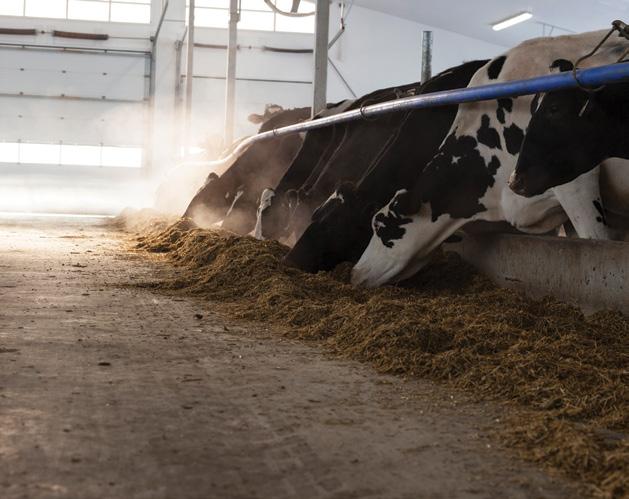HARVESTING QUALITY FORAGE
Plus, precision feeding and how seaweed can reduce methane Pg 14
THE VOICE OF ONTARIO DAIRY PRODUCERS
EARLY FALL 2023
How your farm’s nutrition plan is the cornerstone of herd health and productivity


HARVESTING QUALITY FORAGE
Plus, precision feeding and how seaweed can reduce methane Pg 14
THE VOICE OF ONTARIO DAIRY PRODUCERS
EARLY FALL 2023
How your farm’s nutrition plan is the cornerstone of herd health and productivity

Udder Health
Manage antimicrobial resistance, prevent mastitis and start a sDCT program with our Udder Health report.

Methane Efficiency
Reduce CH4 emissions without affecting production values with Methane Efficiency evaluations.
Webinars





Learn and apply proven insights and methods by attending our workshops and webinars.
Feed Efficiency
Predict which cows are the best at converting feed to milk with Feed Efficiency evaluations.
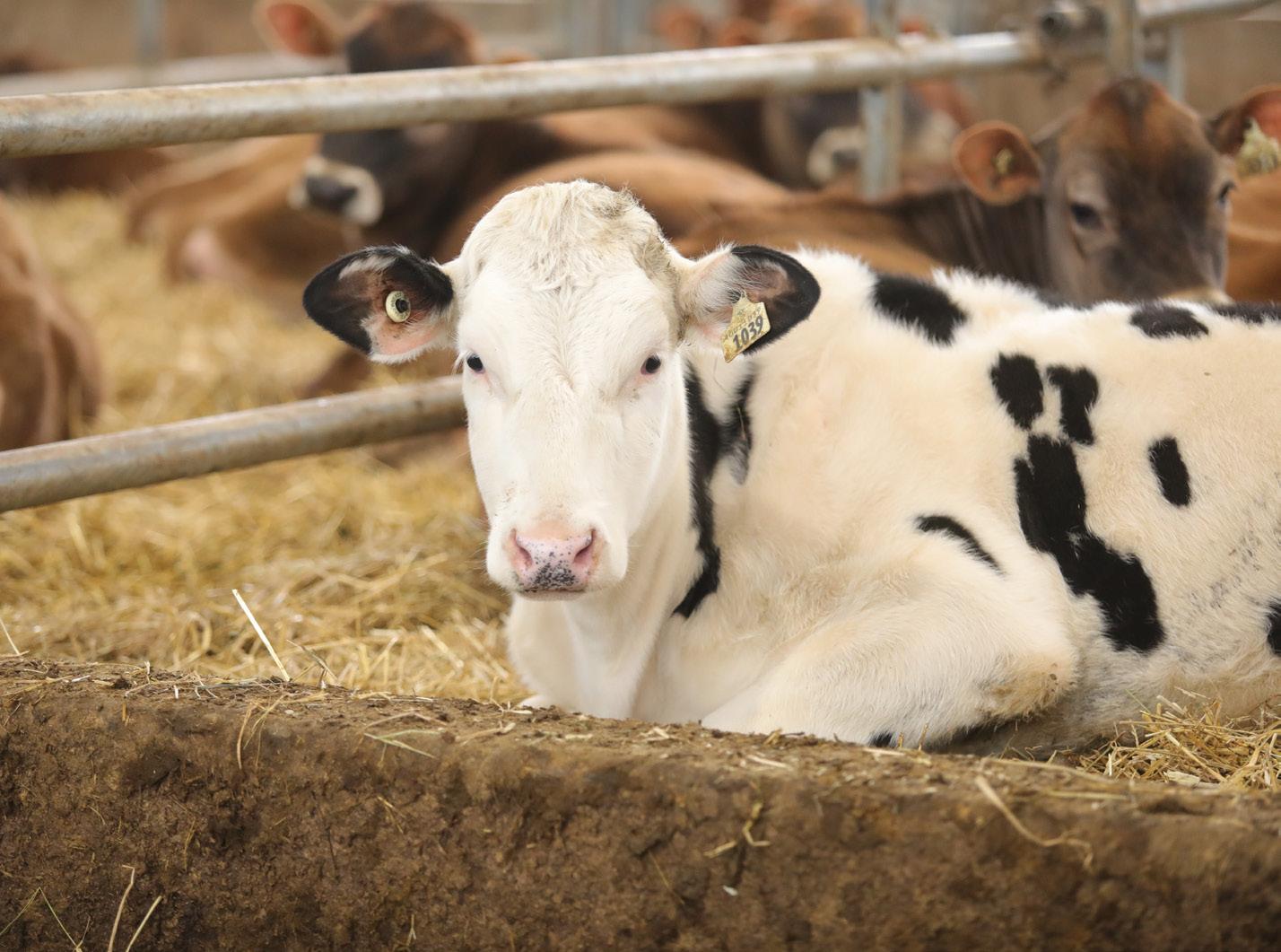
Expertise
Chat with our team and get the tools and advice you need for data-driven decision making.
Body Maintenance Requirements
Consider the metabolic body weight of animals and control feed costs with Maintenance Requirements evaluations.
PUBLISHED BY DAIRY FARMERS OF ONTARIO
6780 Campobello Road
Mississauga, ON L5N 2L8
EDITOR
Theresa Rogers theresa.rogers@milk.org
ADVERTISING
Pat Logan
pat.logan@milk.org
519-788-1559
GRAPHIC DESIGN
Katrina Teimo
CONTRIBUTORS
Jean Brisson, Andrew Brooks

Dairy Farmers of Canada, Trevor DeVries
Jean-Philippe Laroche , Guilherme Madureira
Chris McCullough, Jeanine Moyer, Steven Roche, Julia Saraceni, Lilian Schaer, Carlee Wright
Canada Post Publications Mail Sales Product Agreement No.40063866.
Return postage guaranteed. Circulation: 8,000.
ISSN 0030-3038. Printed in Canada.
SUBSCRIPTIONS
For subscription changes or to unsubscribe, contact:
MILK PRODUCER
6780 Campobello Road
Mississauga, ON L5N 2L8
Phone: (905) 821-8970
Fax: (905) 821-3160

Email: milkproducer@milk.org
Opinions expressed herein are those of the author and/or editor and do not necessarily reflect the opinion or policies of Dairy Farmers of Ontario. Publication of advertisements does not constitute endorsement or approval by Milk Producer or Dairy Farmers of Ontario of products or services advertised.
Milk Producer welcomes letters to the editor about magazine content.
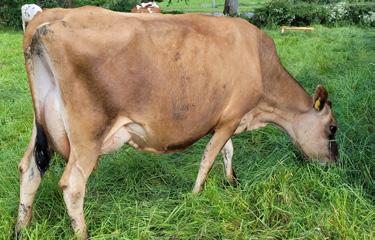
*All marks owned by Dairy Farmers of Ontario.
WEBSITES & SOCIAL MEDIA
www.milkproducer.ca
www.milk.org
Facebook: /OntarioDairy
Twitter: @OntarioDairy
Instagram: @OntarioDairy
LinkedIn: dairy-farmers-of-ontario
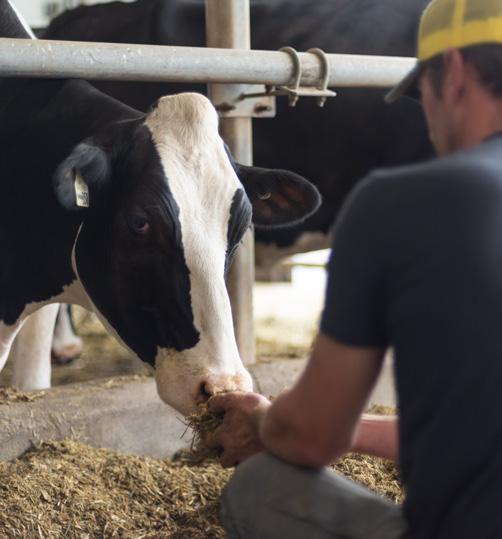
Nutrition is the cornerstone of herd health and productivity.
By collaborating with a vet and nutritionist, producers can identify goals and challenges, and create a herd nutrition and health management plan specific to their farm.
We all know the old adage, “you are what you eat” and it’s just as important for cows as it is in our own homes. We all need to consume a healthy, balanced diet to ensure we are getting all the vitamins and nutrients we need to perform at our peak.
I have quite a few urban friends who often ask me how and what I feed my cows. I tell them on my farm, like most, we have a TMR mixer and we add the ingredients including homegrown haylage, corn silage and grain corn. We also grow some of our own protein. The rest of the ingredients are purchased products we buy to balance the ration. We always try to use the best ingredients we can. “You’re feeding these animals like they’re Olympic athletes,” commented one friend after learning about the feeding regimen. Indeed, we are. We expect a lot from them, so
we’ve got to feed for that. We set production goals, aiming for the height of production while keeping a very happy and healthy herd. Working with our nutritionist, we sample and rebalance rations every two to three months to make sure we’re on the right track.
Cows like consistency and routine so we avoid unnecessary changes to their diets but if we hear about a new product and there’s science behind it and it works, we speak to our nutritionist and take advantage of the potential opportunity. From forage to the latest additives, this issue is full of stories on the opportunities available to producers to make the most of feeding their cows.
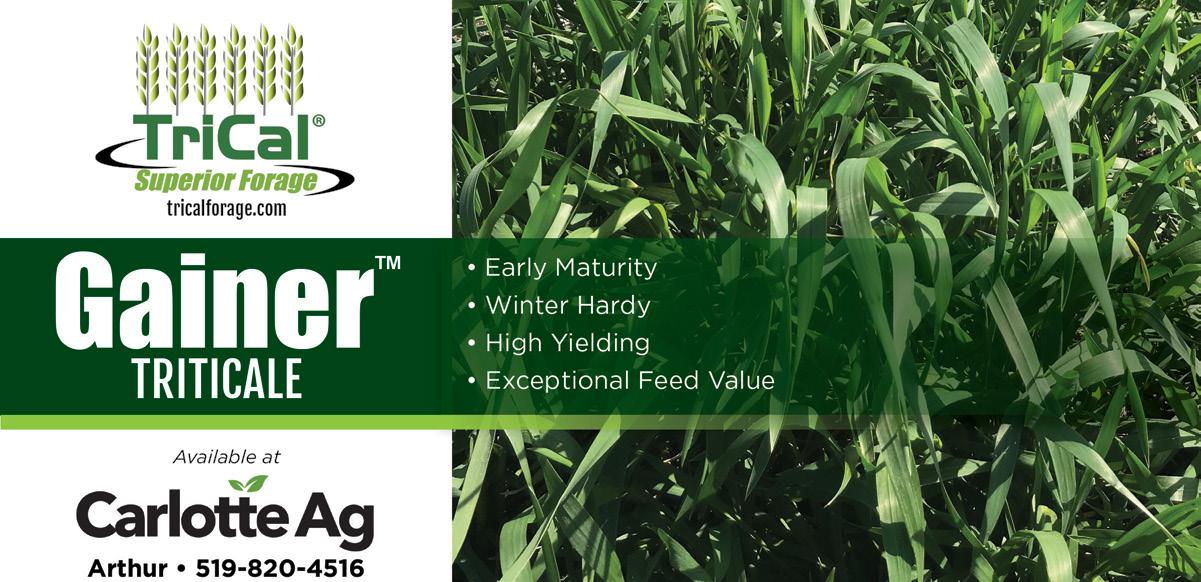
And, in my new role as Chair of the Livestock Research Innovation Corporation (LRIC), I want to help create a robust future for Ontario’s livestock sector through
collaborative, creative and practical research and innovation, including with fundamentals like feed. It’s a pivotal time for the livestock industry globally as the world tackles critical issues like greenhouse gas emissions, and I believe it’s our job to take an active role in defining and promoting the key role our industry plays in the planet’s future.

TO SUPPORT AND OPTIMIZE OVERALL IMMUNE FUNCTION AND INTESTINAL HEALTH
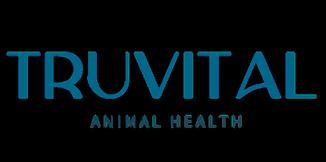
LACTIFEN CONSISTS OF BENEFICIAL ANTIMICROBIAL PEPTIDES COMMONLY FOUND IN COLOSTRUM, AND IS USED TO IMPROVE WEIGHT GAIN AND INTESTINAL HEALTH DURING PERIODS OF STRESS


Give your calves a Sure Start in life.
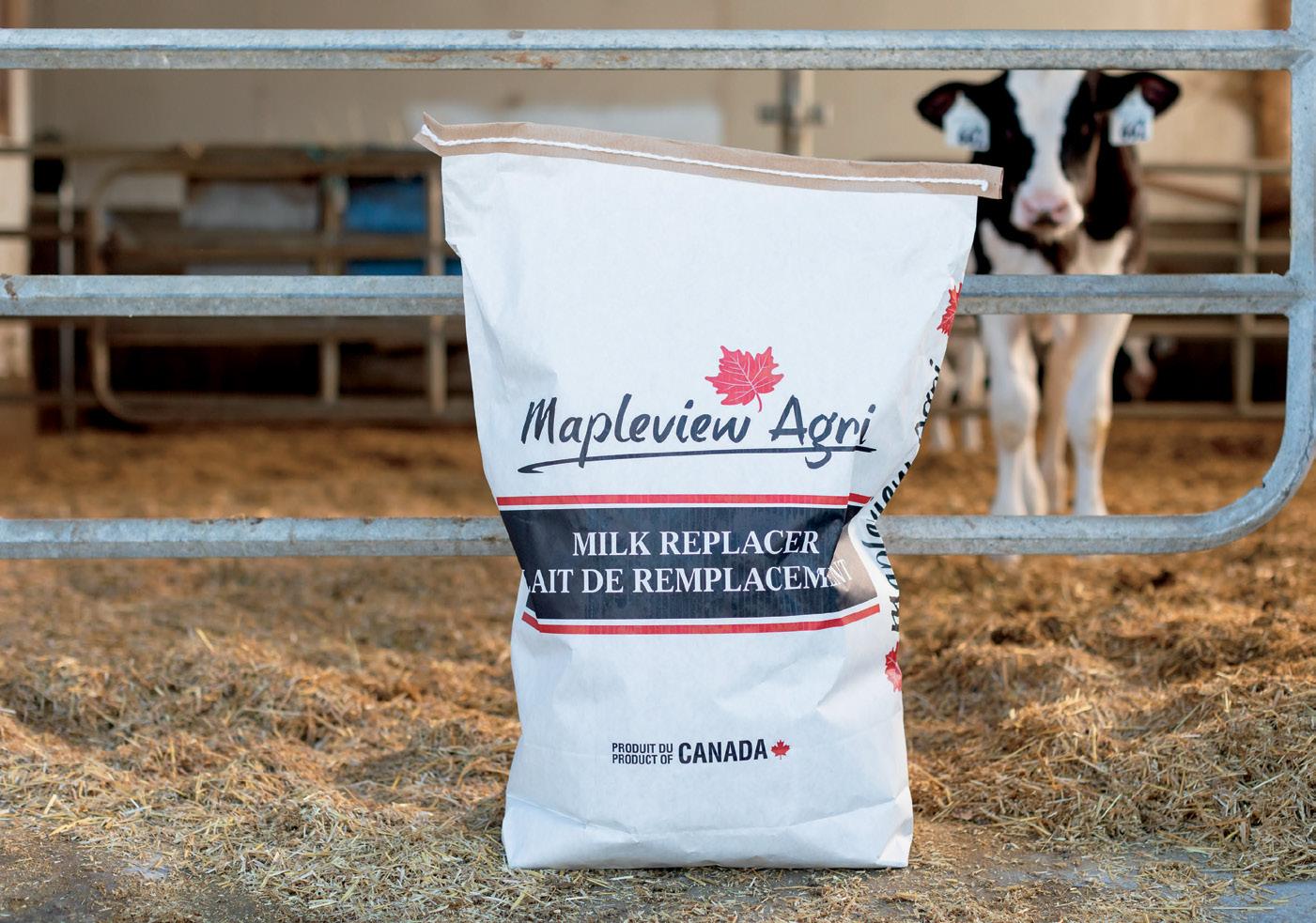
Dairy cows rely on a diet rich in forage (plant material) that includes the right combination of energy, protein and fibre to keep the rumen happy and healthy.
A good diet is balanced, with feed that is typically mixed to ensure cows do not sort their food and eat a consistent supply of nutrients (think of this like a kid eating all their potatoes and meat while leaving the peas in a shepherd’s pie).
Cows are grazers and prefer to eat more frequent meals throughout the day.
Each farm differs in how their cattle are fed, influenced by the type of crops grown and even whether the milking system is robot versus conventional.
Cows consume vitamins through their diet. A nutritionist works with the farmer, analyzing the forages at a lab and supplementing the right amount of these minerals through a feed formulation.
Important minerals include calcium, phosphorus, magnesium, sodium, chloride, potassium, sulphur, iron, zinc, manganese, copper, cobalt, selenium, and vitamins A, D, and E. Additional products may be added to meet cows’ specific needs. These may focus on rumen health or on specific nutrients that are not available based on the forages and concentrate used.
Cows are the ultimate upcyclers, taking in waste products and converting them into a consumable product. The types of concentrate and the amount are determined by analyzing the forages and determining what is needed to ensure cows remain healthy and happy.
The three types of concentrates are:
Carbohydrates: barley, corn, oats, wheat, bakery byproduct, potatoes (destined to be thrown away or from
human food creation), leftover candy or chocolate.
A fully-grown dairy cow drinks
100 to 180 litres of water every day, or enough water to fill a bathtub.
Protein: canola or soybean meal (byproducts of oil extraction), distillersʼ grain (byproduct of ethanol production for either alcohol or fuel), brewersʼ grain (byproduct of brewing process), cotton seed (byproduct of cotton production), and corn gluten meal (a processed corn byproduct).
Fat: vegetable oil, tallow and other protected (insoluble) fat sources.
This is the fibre-containing material usually derived from grinding up the whole or most of the plant (the part that is broken down by the cow using her more complex ruminant stomach).
There are two forage types:
Wet forages (or silage) are fermented to increase digestibility. Examples include corn, alfalfa, soybean (a good source of protein when alfalfa is not available), barley and small grains (easy to digest and provides a combination of energy and protein), and grass haylage (a moderate source of protein and energy).
Dry forages keep for much longer but require more time to dry in the field before harvesting. Examples include hay (typically grass, mixed or alfalfa) and straw (leftover plant material from cereal crop harvest including barley, wheat or oats).
The recently updated “Code of Practice for Care and Handling of Dairy Cattle” in Canada states “breed cows to polled sires to avoid the need for bud/ horn removal“ as a recommended practice.

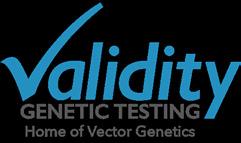

Matt Groen, a nutritionist for Cargill in Guelph, Ont., joins the North American Intercollegiate Dairy Challenge (NAIDC) on the board of directors.


Three new board members and executive committee were recently elected. Groen is the sole Canadian.
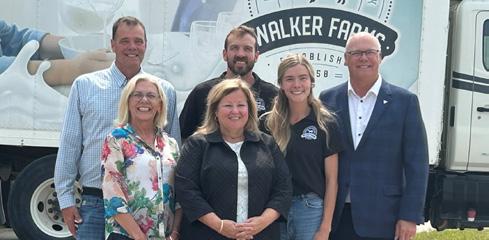
NAIDC’s mission is to “Develop tomorrow’s dairy leaders and enhance the progress of the dairy industry, by providing education, communication and networking among students, producers, and agribusiness and university personnel.”
Groen, who works in dairy technical services as a nutritionist for Cargill, has a history of involvement with the NAIDC. He competed for the University of Guelph at the national dairy challenge competition in 2011 in North Carolina. Since then, he has been involved in helping with coordination of the University of Guelph’s dairy challenge course and has helped coach the University of Guelph dairy challenge team alongside the late Dr. John Walton and presently with Dr. Trevor DeVries.
More than 500 dairy students have opportunities to participate each year through the national competition, the Dairy Challenge Academy and four regional events. The board of directors includes a mix of university professionals, dairy producers and industry sponsors.
www.dairychallenge.org
In August, Dairy Farmers of Ontario (DFO) joined the federal and provincial governments at the Walker family’s dairy farm for a special event announcing the governments’ investment of up to $7.5 million through the Sustainable Canadian Agricultural Partnership (Sustainable CAP). The partnership will help eligible agri-food businesses and contributors enhance their biosecurity measures to support animal and plant health, and food safety.
The Biosecurity Enhancement Initiative (BEI) is a new cost-share offering that will help farmers, food processors and other essential farm-supporting agri-food businesses protect their operations against disease, enhance operational resilience and heighten public trust in the food supply system.
DFO board member, Vicky Morrison, attended the event alongside Cheryl Smith, Chief Executive Officer at DFO, Lisa Thompson, Ontario Minister of Agriculture, Food and Rural Affairs, and Rob Flack, MPP for Elgin–Middlesex–London and Parliamentary Assistant to the Minister of Agriculture, Food and Rural Affairs.
Ontario Veterinary College (OVC) researcher and professor Dr. Stephen LeBlanc has been recognized with an appointment to a Research Leadership Chair at the University of Guelph. LeBlanc is a professor in OVC’s department of population medicine and serves as director of Dairy at Guelph, the university’s research centre for all things dairy.
Launched in 2017, the research leadership program recognizes mid- to late-career researchers at the University of Guelph nominated by their college for outstanding research contributions in their respective disciplines to the community.
“Stephen is well-known at the University of Guelph and beyond for his enthusiastic and energetic approach to research and teaching and the tremendous expertise and insight he provides to the dairy industry,” says Jeff Wichtel, dean of Ontario Veterinary College. “Stephen provides invaluable leadership and guidance to colleagues, students, producers and industry experts every day, and we’re happy to see his efforts recognised.”
https://ovc.uoguelph.ca


A new report from market research firm Mintel says Canada’s dairy farmers are a key point of relatability with consumers.


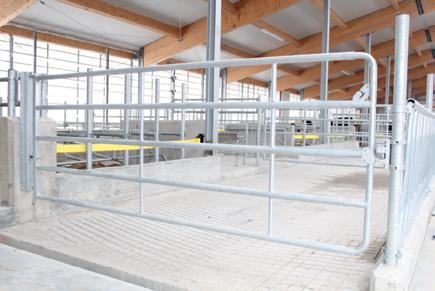

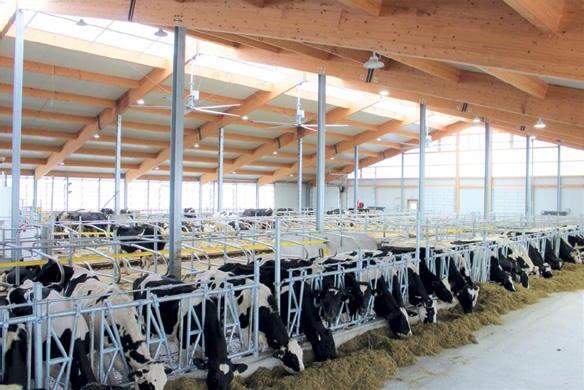


In the report, Dairy and Non-Dairy Milk, Canada – 2023, 92 per cent of Canadians agree “it’s important to buy Canadian dairy milk to support Canada’s economy and workers.” This echoes findings from Mintel’s Sustainability in Food – Canada, 2022 report in which when Canadians were asked who were the most trusted sources in terms of understanding food and drink’s environmental impact, farmers ranked second (after climate experts). Mintel suggests Canadians trust and even relate to dairy famers and that beyond the beverage itself and the benefits associated with it, milk’s link to farmers remains a powerful influence.
Other key findings:
“Made in Canada” matters most to Canadians when purchasing dairy milk. The next most important consideration is fat content at 32 per cent.
Canadians hold a positive view of the dairy industry’s environmental stewardship. Canadians overwhelmingly “trust that dairy milk producers are taking the steps needed to protect the environment” with 83 per cent in agreement.
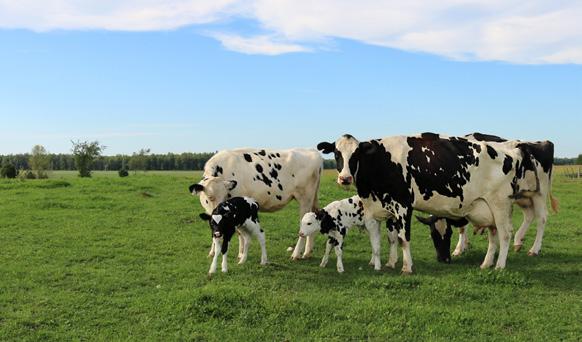
at some point over the past three months, well ahead of the just over half who have purchased non-dairy milk over that same period.
www.mintel.com

Nearly all Canadian adults have purchased dairy milk

DAIRY PRODUCTION IS A MIXTURE OF BOTH ART AND SCIENCE. Having spent the first part of my career after grad school as a ruminant nutritionist working with producers, I understand this firsthand.
While our recommendations should be based on science (either from the literature or from nutrition models), the art of dairy is subjective and our past lived experience also plays a role in how we recommend ideas to each other. While something may work on one farm, the underlying conditions may be completely different on another. As a result, the same practices might not work. There has to be a way we can reach common ground and the role of research is to be that bridge.
Take, for example, the concept of feeding milk to calves. In the past, calf scours were considered a symptom of too much of a good thing. The scouring was hypothesized to be related to calves receiving too much milk and upsetting their internal balance. To remedy this problem, restrictive feeding was introduced, where calves were fed a set amount of milk, which was not adjusted based on growth or other animal-specific factors. This proposed solution was meant for one problem but may have created many others in return. Some producers challenged the status quo, opting for higher feeding rates, ad-lib feeding and automated systems. World-renowned researchers (many from our own University of Guelph) saw the problem, decided to take up the challenge and conducted research trials. They tested the hypothesis, ran the statistical analysis and developed some decision-making algorithms that could help producers. As a result, we now have best management practices that work on the farm and which are supported by research in the field. This same model is seen throughout the dairy world and ensures we progress toward innovation in our field.
Dairy Farmers of Ontario has many projects focused on animal and human nutrition, which include initiatives both within the DFC Cluster Program and the four pillars of the DFO Research Program:
(1) Farm Efficiency and Sustainability
(2) Animal Health and Welfare
(3) Milk Composition, Quality and Food Safety
(4) Human Nutrition and Health
Many topics within these pillars remain to be explored. As challenges arise, new and innovative solutions will be needed and it is up to all our dairy stakeholders to contribute to the future art and science of dairy production.
Dairy Farmers of Ontario partners in several ongoing research projects with themes related to dairy nutrition. Following are a few of those projects, the basis for the project, the researchers involved and the other industry and government partners.
(1) Finding Solutions to Alleviate Gastrointestinal Health in Dairy Cows and Calves
Synopsis: To investigate the effects of probiotic supplementation during the transition period on performance, nutrient metabolism, indicators of systemic inflammation and gut function in dairy cows while assessing its impact on colostrum bioactivity and calf health and performance.
Researchers: Michael Steele, David Renaud, Gisèle LaPointe, Leluo Guan, Gregory Penner
Partners: NSERC, OMAFRA, Dairy Farmers of Ontario, Lallemand Inc., Elanco Animal Health, Alberta Milk
(2) Artificial Intelligence to Interpret and Use Milk Fatty Acids Across Canada
Synopsis: To develop and implement artificial intelligence and machine learning techniques to add value to a new milk indicator for better use across Canada.
Partners: Canadian Agricultural Strategic Priorities Program (CASPP), Lactanet, Les Producteurs de lait du Quebec, Dairy Farmers of Ontario
Read more about this project on page 12.
(3) Improving Welfare and Adding Value to Cull Dairy Cows Through Feeding
Synopsis: To explore the opportunity to enhance the welfare and value of these cows through proper dryoff and feeding before shipping.
Researchers: Todd Duffield, David Kelton, Katharine Wood
Partners: OMAFRA and Dairy Farmers of Ontario
(4) Optimization of Purebred and Crossbred Dairy Calf Performance, Health, and Welfare
Synopsis: To explore the opportunities of surplus dairy calves through genetics, feeding, nutrition and housing, and quantify the economic implications.
Researchers: Michael Steele, David Renaud, Katharine Wood, Marcio Duarte, Alfons Weersink, Christine Baes
Partners: NSERC, OMAFRA, Trouw Nutrition, Semex, Beef Farmers of Ontario, Veal Farmers of Ontario, Alberta Milk, BC Dairy Association, Dairy Farmers of Ontario
Blending the art and science of young animal nutrition to bring you premium products with innovative ingredients
Our team of Young Animal Specialists can assist you on your farm with quality products, custom feeding plans and troubleshooting
The future of your herd deserves the best. Contact us today to learn how we are more than milk replacer

 By Jeanine Moyer
By Jeanine Moyer
DAIRY PRODUCERS NEED INNOVATIVE TOOLS AND APPROACHES TO OPTIMISE MILK PRODUCTION while ensuring the overall health and well-being of their cattle. One promising approach is the integration of a fatty acid profile, which can be used to evaluate the feeding status of the herd, assist with nutrition analysis and offer insights into rumen fermentation.
Milk fat is one of the most variable components in milk, both in concentration and composition. The total fat content and the fatty acid profile are associated with animal-related factors like genetics, lactation stage and rumen health. Management and nutrition also contribute to milk fat content, making the analysis of a fatty acid profile an innovative tool for herd nutrition and management evaluation.
Over the past two decades, researchers have studied fatty acid profiles and examined the complexity of milk fat, but the high testing cost hindered widespread adoption. A fatty acid profile can now be estimated from bulk tank samples, using the same technology for testing milk for other components, like fat protein and lactose. The current technology records approximately 200 data points per sample, some of which can be used to estimate other subcomponents of milk including the fatty acid profile (with the addition of updated calibrations).
In support of this technology, Dairy Farmers of Ontario has participated in a collaborative multi-year research project, along with Les Producteurs de lait du Quebec, Lactanet and the Canadian Agricultural Strategic Priorities Program. This ongoing project is designed to develop the capacity for fatty acid profiling technology in Canada using artificial intelligence to interpret and use milk fatty acids as a herd management tool. The research aims to deliver a
Fat, one of milk’s many nutritional compounds, is composed of more than 400 fatty acids. A fatty acid profile is the composition of these fatty acids within the milk.
new value-added tool for dairy farmers to optimise fat and protein concentrations in their milk production.
Using insights gleaned from this research, fatty acids can be categorized three main ways. These categories can be used to examine and provide valuable insights into a cow’s nutritional status:
• De novo – shorter-in-length fatty acids formed in the rumen, which, when analyzed, can indicate rumen health.
• Mixed – fatty acids from the feed or the mammary gland that can be used as another tool to evaluate rumen functionality and the effectiveness of fat supplementation.
• Preformed – these fatty acids are formed before reaching the mammary gland (from grain, forage, fat supplementation and fat mobilization from body condition). The preformed portion of a fatty acid profile is an indicator of fat levels fed in the ration. If too low, cows may not receive enough fat in their diet. Higher than average preformed levels may indicate fat levels are too high within the ration or that cows are mobilizing more body condition.
Beyond these three main categories, select fatty acids can be differentiated as polyunsaturated. Examining the polyunsaturated fatty acid levels may be useful if de novo fatty acids are low, especially because high polyunsaturated levels may indicate the possibility of rumen acidosis or excess fat within the ration. These conditions can lead to milk fat depression, directly impacting profitability.

Besides utilising fatty acid profiles for herd and ration evaluations, farmers can use this new evaluation tool for benchmarking their production and performance over time against their historic trends and industry averages. The information can also be used with other tools, including total fat level, MUN, protein and lactose, to examine feed rations and the implications of any changes.
By leveraging fatty acid profiles in the future, dairy farmers may be able to make informed decisions that optimise milk production, improve cattle health and enhance overall herd performance.
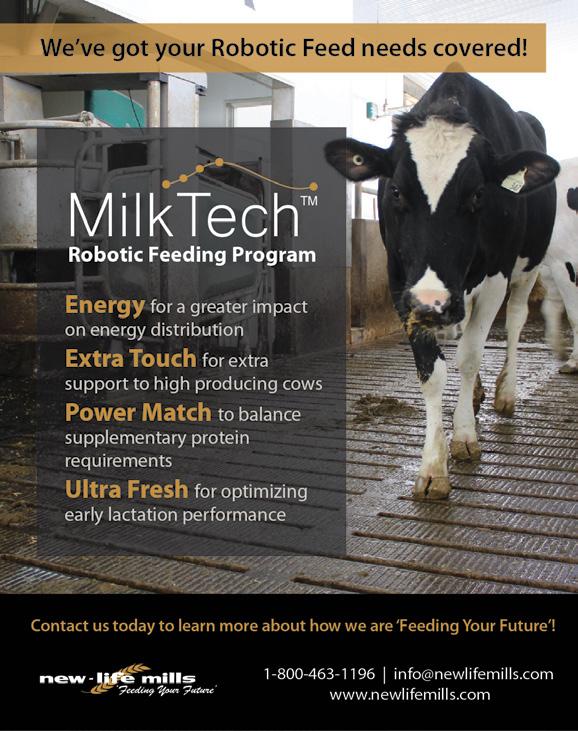
Besides utilising fatty acid profiles for herd and ration evaluations, farmers can use this new evaluation tool for benchmarking their production and performance over time.
RECENT RESEARCH FROM THE UNIVERSITY OF GUELPH is using artificial intelligence (AI) to improve precision feeding and individualize feed for dairy cows. Dr. John Cant from the Ontario Agricultural College’s Department of Animal Biosciences is the lead researcher on a study using AI technology to forecast nutritional needs for individual cows.
“Farm animals are typically managed in groups where an ‘average’ animal is the target, leaving above and below-average animals at a suboptimal level of nutrition and wellness,” explains Dr. Cant.
Using AI forecasting to tailor cows’ diets avoids waste associated with over-feeding, contributes to animal health and well-being, and improves the productivity and sustainability of dairy farming.
Dr. Cant’s research is one of several projects looking at novel agricultural technologies to improve competitiveness and sustainability of Canada’s livestock industries.

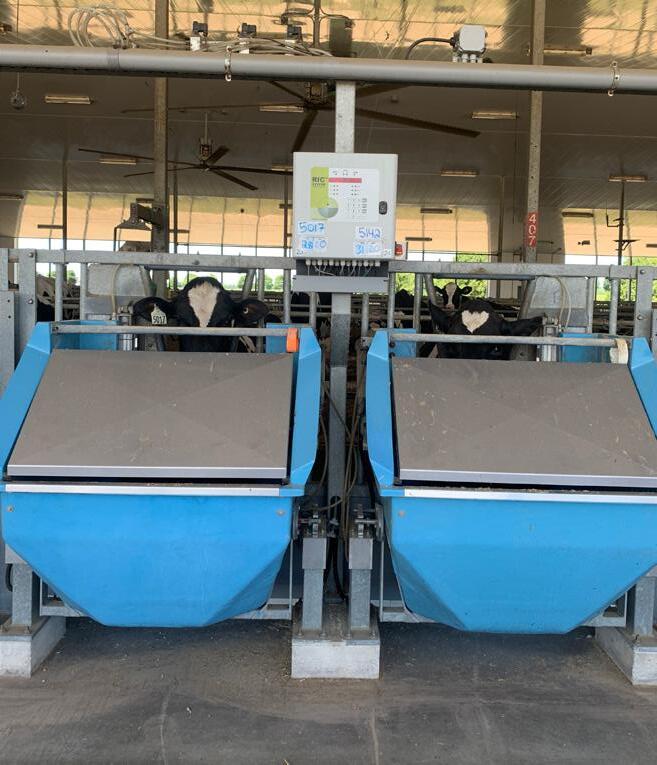
Modern dairy cows are producing more milk than ever for a growing population, but increased yields are associated with new challenges. Meeting the needs of dairy cows is demanding, especially when it comes to nutritional requirements to support milk production, as well as health and fertility.
Emerging technologies that support continuous and large-scale data collection create new opportunities to optimize farm management
through precise and individual animal decision-making. “The advent of technologies to automatically milk, feed and record data on individual cows creates an opportunity to target precise nutritional interventions to individual cows and reduce inefficiencies,” says Dr. Cant.
His research team is creating a virtual representation of cows based on farm records and data from sensors. “The idea is to collect data on individual free-moving cows, create a model for each individual cow at that moment in time, then optimize and deliver a diet for each cow and see how she responds,” he adds.
This type of artificial intelligence system creates a better picture of the nutritional physiology of cows and allows targeted decisionmaking based on individual animal nutritional needs.
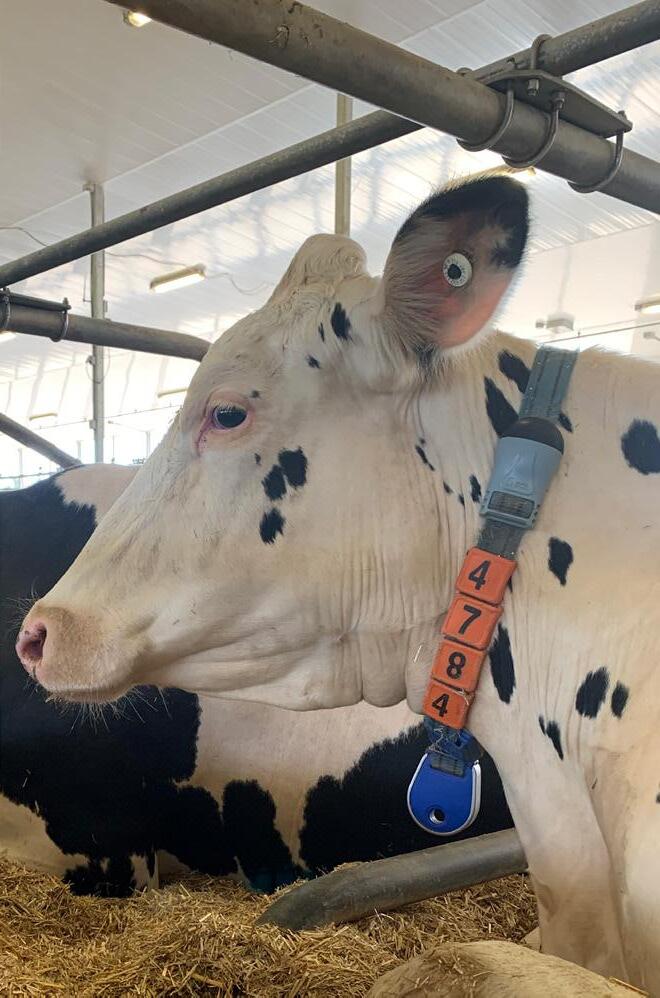
Dr. Cant is one of many researchers working at the Ontario Dairy Research Centre in Elora, Ont., with support and industry partners.
The Ontario Dairy Research Centre is equipped with technologies that automatically collect large amounts of information. With the support of Dr. Lucas Alcantara, Manager of Research Centre Data at the University of Guelph, Dr. Cant’s research uses data from milking equipment, bodyweight scale, body condition score camera, feed bunks, rumination collars, activity tags and respiratory gas exchange monitors of individual cows.
Dr. Cant and post-doctoral researcher Dr. David Innes are using machine learning and mechanistic models to forecast the next week’s data, run repeated analyses on the forecasts to identify optimum feed delivery, and then automatically modify feed delivery to each animal.
“There are several challenges to overcome during this process, including cleaning data, accessing raw numbers from sensors, missing information and storage of all these digital materials,” says Dr. Innes about handling the large amounts of information being collected.
Dr. Cant and Dr. Innes point to future challenges with data ownership since multiple companies own different technologies. Also challenging are the multiple and sometimes potentially competing priorities, such as milk component yields, health, fertility and longevity, meaning both producers and consultants must be involved in setting farm-specific goals.
Automation and digital tools offer new opportunities for dairy farming efficiency and innovation. Camera-based systems can monitor
“The advent of technologies to automatically milk, feed and record data on individual cows creates an opportunity to target precise nutritional interventions to individual cows and reduce inefficiencies.“
—Dr. John Cant, Ontario Agricultural College’s Department of Animal Biosciences
cow feeding behaviour and learn from it. Technology can be used to evaluate feed preparation or help select new feed ingredients to overcome rising prices.

Implementing new technologies may affect facility design as well. Precision feeding requires equipment – such as feed consumption trackers, cameras and sensor-based monitors – to measure and track feeding behaviours of individual cows. Maximizing the value of milking robots will go beyond labour saving to fine-tuning individualized management, combining data from other sources.
Researchers are still investigating the potential of artificial intelligence, but creating a virtual representation of cows using
their own data could optimize cows’ performance and efficiency, including health, reproduction and milk production. Producers will have options to set more precise goals, for example for feed efficiency, milk composition or in response to seasonal changes, opening up opportunities for learnings and improvement.
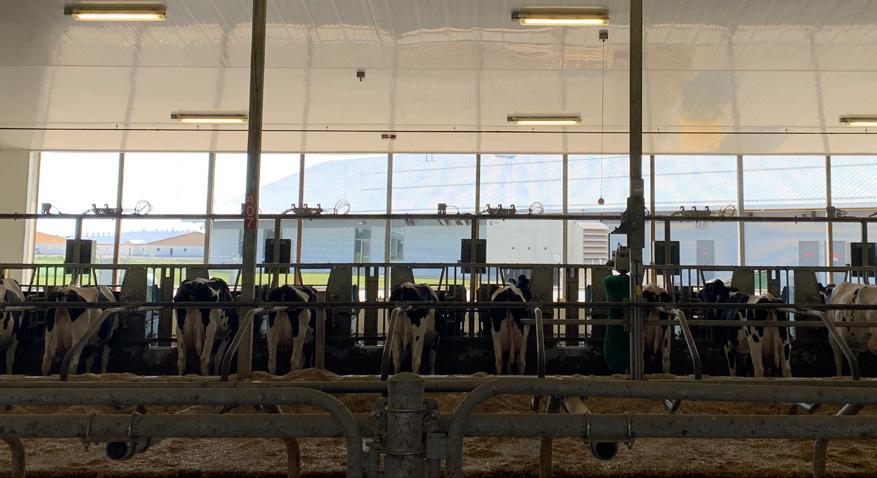
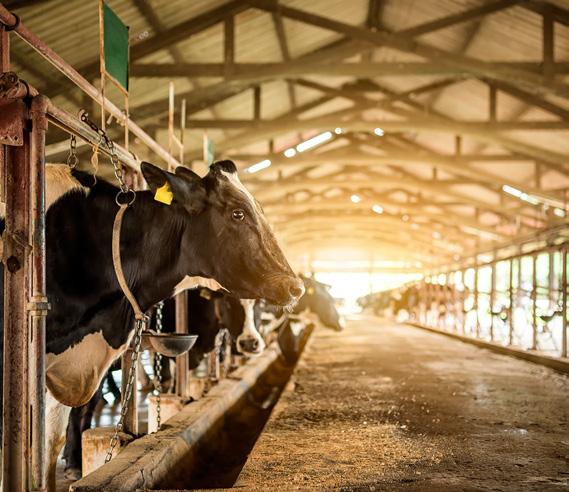
“I see a whole new generation of farm consultants coming up with skills in data analysis and decision-making based on this information,” says Dr. Cant.
This research is funded in part by the Ontario Agri-Food Innovation Alliance, a collaboration between the Government of Ontario, the Agricultural Research Institute of Ontario and the University of Guelph. The Ontario Dairy Research Centre is owned by the Agricultural Research Institute of Ontario and managed by U of G through the Ontario Agri-Food Innovation Alliance.
Guilherme Madureira is a PhD student at the University of Guelph in the Department of Animal Biosciences and a summer Communications Coordinator for Dairy at Guelph. Dairy at Guelph is the network of over 60 faculty and 120 graduate students at the University of Guelph doing research related to dairy production and foods. We build capacity and collaborations to do research that solves problems for the dairy industry and communicate research results to producers. The University of Guelph is Canada’s Dairy University and a global leader in dairy research.


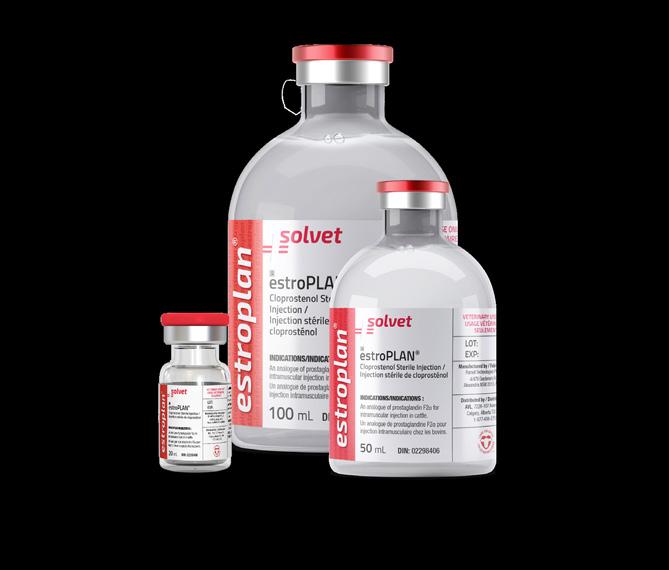

MUCH TO THE FRUSTRATION OF THE LIVESTOCK INDUSTRY, there is a narrative that suggests eliminating animal agriculture is the solution to the world’s climate change problem.
This ignores the critical role livestock plays in global food protein security, regenerative agriculture and carbon sequestration, says Ian Ross, President and CEO of Grand Valley Fortifiers (GVF) and board member with Livestock Research Innovation Corporation (LRIC).
What’s needed, he says, is for the sector to be a more active participant in the climate change discussion: promoting the science while showcasing the importance of economic and food security, as well as the environmental efficiency of meat, milk and eggs when measured on a human digestible protein basis.
According to Ross, suppliers – including farms – who can’t comply will likely see their domestic and international market opportunities shrink and may also face limited financing and investment capacity in the future.

“How can we help position famers better for a more sustainable future?”
—IanThis includes greater understanding of how much human food and energy byproducts livestock consume in developed nations and the positive effects pasturing and manure have on soil health and carbon sequestration.
This matters because food companies, for example, are setting their own sustainability targets, including emissions that come from the entire value chain, and will be looking to their suppliers to help meet those targets.
“We’re seeing governments, banks and large food companies who have full-time staff dealing with sustainability issues, driving adoption of environment, social and governance (ESG) plans and over time, this will cascade down to small- and medium-sized business,” Ross says. “How do farms, who don’t have those kinds of resources, navigate in this environment? How can we help position famers better for a more sustainable future?”
With feed production accounting for 55 to 75 per cent of greenhouse gas (GHG) emissions from meat, milk and egg production, as well as representing a significant proportion of a farm’s cost of production, the biggest impact could come from better feed conversion, notes Ross. Better feed efficiency also means lower feed costs and improved business profitability.
In other words, it can pay to pay attention to sustainability. GVF, which manufactures mineral premixes in Cambridge, Ont., is focusing its efforts on making it easier for producers to do just that.
The company is taking a very close look at feed formulation, embracing ingredients that support reducing methane emissions,
Ross, President and CEO, Grand Valley Fortifiers
searching for different protein sources, and including GHG emissions metrics in its feed formulation software to calculate the emissions per tonne of complete feed.
“Part of this process for us is metricizing everything. If we track feed conversion alongside growth, we can see quite clearly what the best feed program is for particular genetics at a particular stage of life,” Ross says.
To help gather that data, GVF has deployed internet-enabled scales on more than 60 hog farms to track average daily gain in real-time. This type of on-farm technology will also provide proof points for something the industry is very proud of: Canadian livestock farmers are already among the most efficient producers in the world.
GVF is also piloting two existing environmental models from the Netherlands and the UK on 12 Ontario poultry, swine, dairy and beef farms. The goal is to evaluate how well they work at the farm level and what results they provide before making them available to producers.
“If companies like ours don’t try to figure this out and help our customers understand what’s coming at them, I’m concerned they may not have as many markets available to them down the road. In the immediate [future], we know focusing on sustainability, which is really about efficiency, can also have a positive impact on farm profitability,” says Ross.
Lilian Schaer is a writer with Livestock Research Innovation Corporation (LRIC). This article is provided as part of LRIC’s ongoing efforts to report on research, innovation, and issues affecting the Canadian livestock industry.
Silage compaction roller





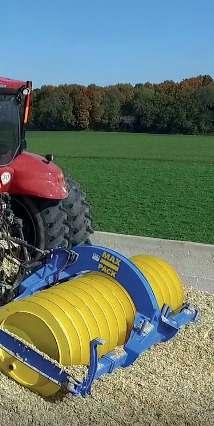



The MAX PACK has been specially designed to increase forage compaction to pack silage tighter, increasing storage capacity and silage quality Adjust the weight of MAX PACK by filling the drum with water


Provides a raking action to help level the silage



The 4 in. high fins help press in silage tight, while solid drum packs




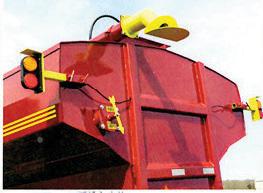
Side shift models available Pack better along walls
Hydraulically shift the MAX PACK 3 ft left or right for better safety in drive over piles and when silage is high above bunker walls



Bump wheels standard on outside of frame to prevent damage to walls and machine






The average dairy cow eats between 22.5 and 24.5 kilograms of dry matter each day, or enough to fill three carry-on suitcases.
WITH THE HIGH PRICE OF CONCENTRATES, producers are being challenged to ask themselves: Can I afford to harvest poor quality forage this year?
A feed adviser knows the best weapon in mitigating the high cost of concentrates is to harvest forages at the right stage of maturity. A quality forage brings more energy and proteins, reducing the need for concentrates but above all, a more digestible forage can be consumed in greater quantity, which has an even greater effect on profitability.
Once a quality forage is harvested, it can be maximized in a high forage ration, which varies depending on the breed. For the Holstein breed, for example, aim for 16 kilograms or more of dry matter in forage per day.
Determining the forage consumption of your herd is relatively easy to check. For chopped silage, know the quantities served per cow and the actual dry matter for each silage. A moisture tester is needed. For large bales, know the size of the bale and the number of knives on the baler. With this information, there are spreadsheets that will calculate the weight of a bale in kilograms of dry matter. Feed advisers can also assist.
The key to feeding a high forage ration without decreasing milk production is high-quality, well-preserved forages and good feeder management. The results are better animal health, more milk components and fewer concentrates in the ration, without impacting productivity.
A growing number of dairy producers monitor the forage dry matter intake (DMI) of lactating cows in their herd. Following are two examples where the amount of forage fed to the animals was validated by a Lactanet adviser and refusals were subtracted (Table 1).
Farm A participated in a milk fat workshop in January 2022. A Lactanet adviser guided the farm in evaluating its feed margin and calculating forage consumption. The initial result of 13.3 kg was below the adviser’s expectations. Not surprisingly, the cost of concentrates exceeded the average by $6.74 per hectolitre, an impact amounting to more than $400 per day for the 200-cow herd. The consultant continued to work with the farm and three months later, the forage dry matter intake is up close to 17 kg and concentrate costs are down to $1.84/hL above average. This is a saving of nearly $300 per day.
Farm B had a forage DMI of 12.9 kg and was disappointed with its herd fat test. By trusting the farm’s forages and gradually decreasing
the inclusion of concentrates, the farm was able to deliver the same amount of fat while significantly decreasing concentrate purchases. The protected fat supplement included in the ration at the beginning of the study was also removed. This was a major improvement.
Table 1. Two real cases that show the advantage of knowing the dry matter intake in forages.
Some producers are reluctant to harvest their forage crops earlier because a higher fibre content benefits rumen health. While it is important to provide enough fibre to maintain good rumen health, it doesn’t mean harvesting forage plants at high maturity is the only way to go.
The most cost-effective way to ensure the animals are getting enough fibre is to harvest forages at the optimum growth stage and then increase the proportion of forage in the diet. By feeding a larger quantity of forage with a lower fibre content, the quantity of fibre in the diet can be maintained.
Table 2 presents an interesting simulation with a group of highly productive cows that were fed a ration comprising 33 per cent corn silage dry matter (DM). In this scenario, the improved quality of the forage allowed the addition of 0.8 kg (DM) more hay crop silage to the ration, thus replacing 0.8 kg of concentrates (DM) while providing the animals with the same level of energy and metabolizable protein. The overall result corresponds to a saving of $0.66/hL of milk, with no effect on productivity. Not too shabby for a three per cent difference in ADF.
1Corn grain ground fine (396 $/t), soybean meal (758 $/t), minerals/vitamins (1,525 $/t). 2Hay crop silage (220 $/t DM), corn silage (180 $/t DM).
The quality of forages is key to reducing the cost of concentrates in the ration and improving profitability.
Jean-Philippe Laroche, agrologist, M.Sc., is Dairy Production Expert in Nutrition and Forage, Lactanet, and Jean Brisson, agrologist, is Strategic Advisor, Lactanet.
TriOxycide®
Non-iodine PRE and POST milking solution
DeuxSeptMC
Non-iodine PRE and POST milking solution
TheraPrepMC
Iodine PRE milking solution

TheratecMC
Iodine PRE and POST milking solution
BRITISH COLUMBIA
Mountain View Electric Ltd.
Enderby — 250 838-6455
Pacific Dairy Centre Ltd.
Chilliwack — 604 852-9020
ALBERTA
Dairy Lane Systems
Leduc — 780 986-5600
Nobleford – 587-335-9742
Lethbridge Dairy Mart Ltd.
Lethbridge — 888 329-6202
SASKATCHEWAN
Dairy Lane Systems
Warman — 306 242-5850
Emerald Park — 306 721-6844
MANITOBA
Tytech
Grande Pointe — 204 770-4898
ONTARIO
Conestogo Agri Systems Inc.
Drayton — 519 638.3022
1 800 461-3022
Dairy Lane Systems
Komoka — 519 666-1404
Lawrence’s Dairy Supply Inc.
Moose Creek — 613 538-2559
McCann Farm Automation Ltd.
Seeley’s Bay — 613 382-7411
Brockville — 613 926-2220
McLaren Systems
Cobden — 613 646-2062
Performance Dairy Centre Inc.
Embro — 519 423-9119
Wood’s Dairy Source
Keene — 705 295-3247
ATLANTIC PROVINCES
Atlantic Dairy Tech.
Charlottetown, PE — 902 368-1719
Sheehy Enterprises Ltd.
Shubenacadie, NS — 902 758-2002
Lower Queensbury, NB — 506-478-4878

“I’m not opposed to trying new things, but they have to stand up to our climate and produce reliable, quality feed.”
—Alex Anstice, dairy producer, Manitoulin Island, Ont.
NUTRITION IS THE CORNERSTONE OF HERD HEALTH AND PRODUCTIVITY. It’s also one of the few production factors producers have the most control over.

“We owe it to our animals to provide them with everything they need to succeed, including proper nutrition to reach their potential,” says Alex Anstice, a fourth-generation Manitoulin Island, Ont., dairy farmer. “From an economic standpoint, there’s also a huge benefit to having healthy, productive cows. Our lives as farmers are easier when nutrition is done well, like when cows transition and milk well. A healthy, productive herd also makes our jobs more pleasant and our operations run smoothly.”
Anstice works alongside his dad, Jim, operating Oshadenah Holsteins, milking 55 cows in a double-five parabone parlour and cropping 280 acres of corn, barley and alfalfa. His approach to herd nutrition is grounded in relying on science to support decisions and garnering advice from trusted experts, like his nutritionist Tristan Emiry with Agribrands Purina Canada Inc. Together, they build rations with high feed intakes that allow him to meet his animals’ energy needs and enable the herd to reach its production and reproduction potential.
For Anstice, nutrition starts with producing high-quality forages and selecting corn hybrids and haylage mixes that have good digestibility and provide plenty of energy. Building a new freestall barn in 2021 has enabled him to modernize his dry cow ration,
nutrition starts with producing high-quality forages
As a nutritionist, Amy Sova works with dairy farmers to ensure herd nutrition supports a farm’s long-term production goals and identifies potential constraints that could impact success.

moving to a Goldilocks style TMR mix using chopped hay, corn silage and supplement. Anstice says the results have been positive, with few transition cow issues and providing the cows with the highest opportunity to reach their potential during lactation.
“Nutrition is the linchpin between an animal’s genetic potential and production that directly impacts a producer’s milk cheque,” says Dr. Rob Swackhammer, veterinarian with Upper Grand Veterinary Services in Guelph, Ont. A fellow dairy farmer, Dr. Swackhammer is able to blend his production medicine practice with on-farm experience and believes the best approach to herd nutrition is building a trusted team of advisers. He recommends dairy farmers collaborate with their vet and nutritionist, bringing everyone together at least once a year to identify goals and challenges, and create a complementary herd nutrition and health management plan. Accountability is also part of the team approach, and Dr. Swackhammer suggests utilizing nutrition experts, following advice and regular feed tests round out the best approach to herd nutrition.
As a herd veterinarian, Dr. Swackhammer is always on the lookout for signs of nutrition when he visits clients. He’s looking to see if anything has changed since his last visit, such as manure consistency, shine of coats, body score and milk production. “I’m a fresh set of eyes each time I enter the barn, making herd health observations that can often be adjusted by tweaking rations,” says Dr. Swackhammer, noting the herd health team approach means his observations can easily be discussed with the farmer and nutritionist to keep everyone on track to achieve production and farm goals.
Complete herd nutrition starts before a calf is born. “The first three months of a calf’s life are the most important for determining herd health, milk potential and overall success of a cow,” explains Amy Sova, Ruminant Nutritionist with Wallenstein Feed & Supply Ltd., in Wallenstein, Ont. She reminds farmers that a cow’s diet can impact the genetic expression of the calf it carries, especially in late-stage gestation.
Veterinarian and dairy producer, Dr. Rob Swackhammer blends his medicine practice and on-farm experience.

As a nutritionist, Sova works with dairy farmers to ensure herd nutrition supports a farm’s long-term production goals, as well as identify potential constraints that could impact success. She’s always looking for a balance between rations and on-farm factors that can impede performance, such as forage inventory, feeding management, ventilation or water access.
“Water access and adequate space around the source is essential,” says Dr. Swackhammer, reminding farmers water is the most important nutrient in an animal’s diet. “Healthy ruminant animals also need fibre, making forage quality and availability primary factors in a successful dairy nutrition program.”
With forages comprising 50 to 75 per cent of an animal’s diet, Sova recommends farmers get a handle on forage inventory early in the year to maintain a consistent ration and minimize changes throughout the year. “Cows like consistency,” she notes. Regular forage testing to optimize available nutrients and requirements is also required to maintain a balanced ration. Understanding available nutrients also ensures farmers aren’t overfeeding expensive nutrients or supplements and maximizes feed efficiency.
Anstice says he samples his forages more frequently than the average farm, but since his fields are smaller, he has more feed variability. Storing his alfalfa as baleage allows him to keep track of exactly how many bales come from each field and sample results are used to optimise the ration as he works through his inventory. This approach also informs cropping decisions and alfalfa varieties. “It’s all about the numbers and charts. We measure everything to get the right digestibility and efficiency out of our feed,” he says.
When it comes to evaluating numbers, Dr. Swackhammer says a butterfat of four per cent or higher is a clear indication of rumen health. “And a healthy rumen is also a sign of sound reproduction capabilities,” he explains.
Every farm requires an individual nutrition plan to meet production goals. While milk volume and reproduction often rank high on farm priorities and goals, Dr. Swackhammer reminds farmers optimizing nutrition is key to realizing success.

When it comes to measuring the results of an optimised plan, milk yield is only the beginning. Sova says feed efficiency, component

“Nutrition is the linchpin between an animal’s genetic potential and production that directly impacts a producer’s milk cheque.”
— Dr. Rob Swackhammer, Veterinarian, Upper Grand Veterinary Services
yield, feed costs, incidence of disease and reproduction rates are key metrics that affect profitability. “Feed efficiency has become a popular topic lately, too,” notes Sova. “Nutrition and feed additives aren’t new, but conversations around environmental sustainability and methane reduction are bringing them to the forefront.”
Feed additives, such as plant extracts, are being touted for promoting optimal rumen digestion and increased feed efficiencies – all factors that reduce the environmental impact of milk production and contribute to sustainability. Sova points out many dairy farmers have been using these additives for more than a decade and are ahead of the recent focus on sustainability.
Read about seaweed additives on p. 30.

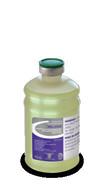

Probiotics are additives that are becoming commonplace for improving fibre digestibility and stabilizing rumen pH, says Sova who relies on research to back up feed program decisions, as well as keep tabs on new feed additives or ration trends. “Probiotics are like an insurance factor for maintaining rumen health,” she explains.
Over the last five years, Anstice has seen an increase in productivity, crediting his focus on creating the optimal environment through feed and nutrition for his herd to maximize genetic potential and production. His farm’s remote location on Manitoulin Island creates

some challenges, such as access to services, the ability to buy quality feed or accessibility to parts, but it hasn’t impacted his herd efficiency and production. The island’s growing season is ideal for corn and alfalfa, he says.
“I’m not opposed to trying new things,” he adds, “but they have to stand up to our climate and produce reliable, quality feed.”
Many producers are feeling the effects of unpredictable weather and changes in climate. “The last couple of years seem to have exhibited more extreme weather patterns,” says Murray Sherk, Chair, Dairy Farmers of Ontario, who farms in Plattsville, Ont., near KitchenerWaterloo. “Depending on where you farm in the country, we have seen everything from extreme drought to unmanageable moisture. These extremes affect both the quantity and quality of feed. On our farm, we are going to focus more on managing inventories well so that we can better control our costs and production.”
Anstice’s self-reliance on feed production means he must approach new cropping practices carefully. This year, he planted eight acres of BMR corn silage as a test. He’ll mark the silage in his agbags to assess the results, a conservative approach that will help him decide whether the risk of planting his entire field using BMR corn next year is worth it.
“When it comes to nutrition, we aren’t too risky. We rely on a balanced ration to give our animals the best opportunity possible.”

“We just don’t have mastitis here. We started in about 2017 with Endovac. IT WORKS! I was concerned about considerable drop in milk. With Endovac, we saw nothing. Nothing at all! I looked very hard at those first two shots when they’re milking... there was nothing. It’s very important that we can use it for all three trimesters because of the fact that we are not affecting milk production at all.”

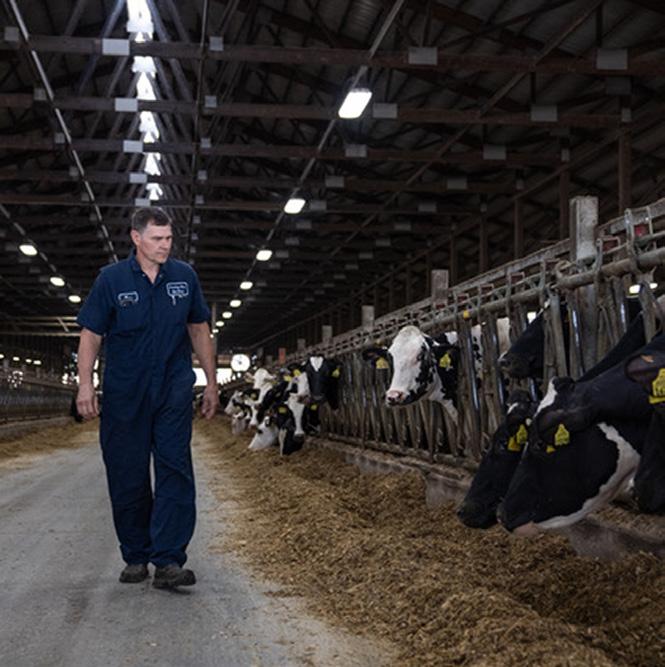 - Greg Costello, Abel Dairy
- Greg Costello, Abel Dairy
“In the herds that we have been utilizing ENDOVAC-Dairy, E. coli mastitis control is not the only control benefit seen, it has also benefited us by utilizing Endovac in that relationship concerning Salmonella. You know, the less shots you have to give, the better off we are. As for the Milk drop, we’ve proven to ourselves through our own research, we do see less milk drop with Endovac. That gives us flexibility where she is in gestation and lactation and that’s a pretty big deal!”
- Tom Hintz, DVM, Country Hills Animal HealthPROPER NUTRITION IS IMPORTANT FOR CALVES OF ALL AGES AND STAGES OF GROWTH SO THEY CAN GROW AND STAY HEALTHY.
Calves must be fed a balanced ration and appropriate levels of vitamins and minerals. Minerals include both macrominerals – those required in relatively large amounts – and micro or trace minerals animals need in much smaller amounts.

Research has shown calves with nutritional deficiencies are less able to ward off the stressors of events, such as weaning or co-mingling. Following are some important vitamins and minerals that play key roles in calf health and development.
Vitamins support many important metabolic processes in calves. The types of vitamins they need and in what amounts depends on their age and stage of production. Calves will get most vitamins from their feed sources but may need some supplements to ensure they’re receiving what they need.
Vitamin A is often low in newly born calves. Signs of deficiency include a rough coat, dull eyes, diarrhea, and pneumonia, which can lead to lower feed efficiency and greater disease susceptibility. Calves may need extra vitamin A during stressful periods like weaning or transport.
Vitamin D is important for healthy teeth and bone development. Calves with decreased growth, weakness, a stiff gait, or laboured breathing may be lacking vitamin D.
Vitamin E fosters muscle development and is often fed together with the trace mineral selenium. And vitamin K is required for blood clotting. In the early stages of their lives, calves receive vitamin B through milk but once their rumens are developed, this vitamin, along with vitamin C, is synthesized by microorganisms in the gut.
ZINC
Zinc is an important trace mineral that supports a healthy calf metabolism, making sure the animal digests and uses the feed it consumes properly. Zinc also boosts immune system development, a critical stage in early calf life, resulting in
Calves must be fed a balanced ration and appropriate levels of vitamins and minerals.
less sickness and healthier calves.
Research has shown zinc can strengthen cattle hooves, which means less opportunity for pathogenic microbes to enter and begin causing foot disease. Calves that might be zinc-deficient will show signs of excessive salivation, listlessness and scaly lesions.
Another trace mineral, selenium, helps boost normal growth and fertility, and helps prevent disease challenges like calf scours by contributing to healthy immune systems. In calves, selenium deficiency can result in a condition called nutritional muscular dystrophy or white muscle disease.
Selenium is passed from the cow to the calf through placenta, so making sure cows are consuming enough of the mineral is
also important. The cow’s ration should be supplemented with selenium and it may also be necessary to give calves a selenium injection after birth.
In order for vitamins and minerals to be as beneficial as possible to calves, they have to be administered at an appropriate level and in a form animals can easily digest. This will vary from farm to farm and there is no one-size-fits-all vitamin and mineral program.
For younger calves, check the tags on your milk replacer to ensure you’re providing balanced nutrition. For older, weaned calves, it’s recommended to have feed stuffs tested and consult with a ruminant nutritionist who can help formulate the most ideal ration for your herd.
For more information, visit www.calfcare.ca.
▶ Oxford Cattle Company is working with genetic companies to select sires for use in our guaranteed calf buy back program.
▶ Honest transparent program with premiums for heavier calves, paid promptly via direct deposit.
▶We are now pleased to announce that we interested in buying your Holstein Bull Calves and can include them in your regular pick up. We will take calves that are over 92 lbs and 10 days old. The price will be negotiated on a weekly basis
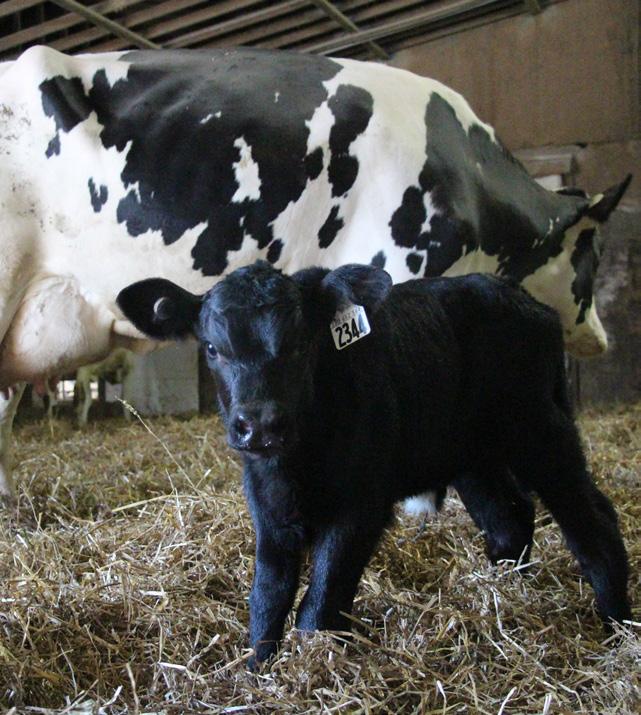
▶ Presently serving Southwestern Ontario region and Ottawa region with interest in expanding.
▶ For a Calf Pick Up Request text (519) 788-1399 by 1:00 pm Mondays
For more information - Contact Cliff, office@oxfordcattlecompany.com
Research has shown zinc can strengthen cattle hooves, which means less opportunity for pathogenic microbes to enter and begin causing foot disease.
EDWARD ISLAND DAIRY FARMER, JOE DORGAN, put his herd of 160 cows on an organic footing in the early 2000s. When he made the move, he found himself having to pay top dollar for an organic feed additive to boost vitamins and minerals in the herd’s diet. He needed a more economical alternative.
He had always known about the health benefits of the seaweed his cows liked munching. The stormy North Atlantic washes it up along the nearby shore in Seacow Pond, Prince Edward Island, regularly. The cows that ate seaweed were healthier and gave more – and better – milk. On top of that, their estrus lasted longer and pregnancies increased.
It was a logical step to include seaweed as a regular part of the feed, but Dorgan wanted to know more so he teamed up with Rob Kinley, an agriculture researcher from Dalhousie University in Halifax, NS, to look at the science. Kinley was able to validate Dorgan’s observations and find another upside he wasn’t even looking for.
Dorgan knew he had a good idea brewing so in 2007, he and a couple of business partners incorporated North Atlantic Organics (NAO) to produce and distribute organic seaweed supplements for cattle feed under the “Atlantic-Gro” trademark. Today, the company employs more than 60 people and uses trucks and tractors to gather the seaweed, a far cry from the early days when the work was done by hand or with horses.
The company harvests three varieties of seaweed: kelp (Laminaria longicruris), rockweed (Fucus vesiculosis), and Irish moss (Chondrus crispus).
“We harvest it right off the beach, stormtossed,” Dorgan says, adding, “the tourist restaurants around here are glad to see the seaweed go and not just because it’s unsightly; if it lies around too long it smells pretty bad.”

The gathered seaweed is dried in the open air until its moisture content is between eight and 10 per cent. It’s then run over a shaker table and pneumatic screen to remove debris before it heads into a massive grinder to be milled to the consistency of a fine pepper.

NAO has a growing list of customers across the U.S. and Canada, most of whom are dairy farmers. When he spoke to Milk Producer in July, Dorgan had just sent his first shipment to a customer in China. That trip takes six weeks and highlights the long shelf life of Atlantic-Gro, Dorgan says. “Once it’s stored and dried and in our packaging, it’ll last forever.”
NAO’s research suggests the optimal dose for dairy cows is four ounces, per head, per day, Dorgan says, but customers are free to experiment.
Hauke Huesing owns Long Alley Farms in Markdale, Ont., an organic dairy farm with approximately 75 cows. The farm has been using seaweed as a feed additive since before Huesing’s parents handed the operation over to Hauke and his wife, Jenna,

about 15 years ago. They used a competing product until recently when they switched to Atlantic-Gro.
Huesing says the main motivator was price. Since switching to Atlantic-Gro, he has increased the dose, which seems to have had an additional benefit. “We used to have a lot more problems with foot rot,” he says. “Now we use more of the kelp meal yearround than we used to and we’ve virtually eliminated those problems. It’s a huge time saving and there’s a financial benefit
“There have been up to 60 mineral elements identified in kelp, including chromium, manganese, molybdenum, nickel, rubidium, sulphur, selenium, silicon, vanadium and zinc.”
—Michael Freiesleben, TLC Animal Husbandry Inc.Joe Dorgan, PEI dairy producer and owner of North Atlantic Organics, discovered the health benefits of feeding his cows seaweed.
to me since I don’t have to deal with the foot problems. There’s also a benefit to the animals not having those problems.”
Michael Freiesleben,
microbiologist, biochemist andowner
of TLCAnimal Husbandry Inc. in Harriston, Ont., agrees kelp “is an excellent nutrition supplement.
“There have been up to 60 mineral elements identified in kelp, including chromium, manganese, molybdenum, nickel, rubidium, sulphur, selenium, silicon, vanadium and zinc,” Freiesleben, a nutritionist and feed formulator says. “All are biologically incorporated into this natural plant feed supplement along with B vitamins, vitamin A and choline. Kelp can be one of the few plant or vegetable sources of vitamin B-12.”
That’s a big boost. Dorgan says aside from better conception rates, the additive reduces mastitis and somatic cell count.

“I have farmers telling me just that benefit alone more than pays for the product,” he says. Other benefits listed on NAO’s website include fewer dietary-related problems, such as retained placenta, laminitis and milk fever.
And what about the added benefit Rob Kinley discovered? It turns out cows consuming seaweed in their feed generate significantly less methane. “We can reduce the methane 30 to 40 per cent, though upward of 80 per cent is probably more realistic,” Dorgan says.
While many farm operators feel the agriculture sector has been unfairly singled out as a source of greenhouse gas emissions, there’s no doubt being able to cut methane generation in cattle would have an environmental benefit and be a significant boost for the industry’s public image.
Kinley, now working in Australia, has published some promising research into another strain of seaweed, Asparagopsis taxiformis, that promises to “fundamentally eliminate” methane generation in cattle.
Whatever future reductions in methane emissions can be achieved, Dorgan believes his seaweed additive is already a winner. “We don’t harm the environment in any way. In fact, we’re doing the environment a world of good. We’re pioneers and we’re doing a good thing.”
10.1.23
“We don’t harm the environment in any way. In fact, we’re doing the environment a world of good. We’re pioneers and we’re doing a good thing.”
—Joe Dorgan


In July, our industry gathered in Winnipeg for Dairy Farmers of Canada (DFC)’s Annual General Meeting. Here, I had the honour of being elected to the position of President of DFC For those who were unable to attend our AGM, I’d like to formally introduce myself and share my vision for our organization.
I farm in Grunthal, Manitoba, milking 230 cows and tending 1,600 acres of cropland with my brother, Charles. Formerly a Chair of Dairy Farmers of Manitoba, I have been a director with the DFC board since 2009. In 2011, I wa s electe d to the position of vice president During my time on the board, I was the chair of the Promotion Committee, the proAction committee and the Canadian Dairy Research Council.
At the Annual General Meeting, we dove into the various consumer, economic, and public policy trends shaping the dairy industry and the food systems of the future. It’s impor tant to be realistic and acknowledge that the challenges are many – but so are the opportunities.
As a way of life, dairy farming in Canada is facing challenges on multiple fronts. From mislabelled imitators to more international products in the dairy aisle to direct on-farm security issues, the times are not so simple anymore. Anti-dairy voices are not as fringe as they once were – they are found misrepresenting your work in op-ed sections, on social media, and even right on farms.
Even if the tasks we face are numerous, so are the opportunities in front of us. It is time to seize and embrace them as we move forward. There is wide recognition among Canadians for the Blue Cow logo, polls that show our fellow citizens trust farmers more than almost any other profession, and the public response to our sustainability strategies has been positive.
Capitalizing on these prospects means not just speaking with one voice, but acting together, too.
Dairy farmers must bridge the thousands of kilometres between regions and make a concerted effort to work together. It’s how we will best position the profession to face challenges and seize every opportunity available.
In the coming months, I will be meeting directly with provincial boards and dairy farmers. But whether it’s sitting down with you on-farm or speaking in front of government committees, I want my work as your President to demonstrate what makes our industry great – one whose social, economic, and nutritional benefits are worth supporting and whose interests are worth fighting for.
As my term as DFC President begins, I know we have the steadfastness to face all challenges head-on and seize any opportunities that come our way. The DFC board and I will continue to count on our membership first and foremost, and I look forward to speaking with you directly and hearing your perspectives.
Thank you,
David Wiens President, Dairy Farmers of Canada David WiensThe role of milk products in health and nutrition has been extensively studied for many years. The Food and Agriculture Organization of the United Nations (FAO) summarized this vast amount of evidence in a recent report, titled Contribution of terrestrial animal source food to healthy diets for improved nutrition and health outcomes.1 It places dairy as an important source of nutrition for people around the world, and Dairy Farmers of Canada (DFC) has analyzed the report to find out what it means to Canadians.
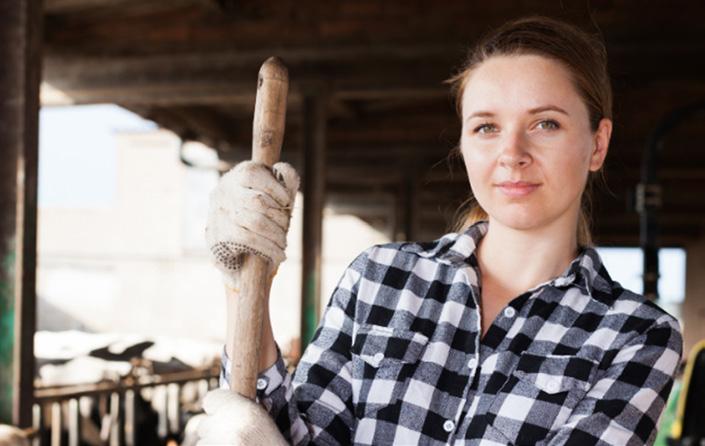
Milk products naturally provide up to 15 nutrients, six of which are often missing in Canadians' diets. This is why consumers need to maintain an adequate, balanced diet, and here, Canadian dairy farmers are well-positioned to help supply their fellow Canadians with nutritious foods. Dairy can play a key part in nourishing our nation, with farmers securely supplying a nutritious product known to help reduce deficiencies.
A strong Canadian dairy sector means we can be less dependent on foreign countries to meet our citizens’ food requirements. We are less vulnerable to global issues beyond our country’s control, such as economic boom-and-bust, natural disasters and even conflicts between governments.
The FAO report summarizes very well the current state of the scientific evidence about milk products and their beneficial role in providing crucial nutrients that are important for optimal growth, development and overall health.
For more information, visit www.fao.org/dairy-production-products/en.
In many areas highlighted by the FAO, dairy products can be an asset. According to Health Canada, many adults have inadequate intakes of magnesium, calcium, vitamin A and vitamin D.2 The FAO report recognizes milk and dairy products for their importance as sources of these nutrients, including complete proteins and high quantities of highly bioavailable calcium.
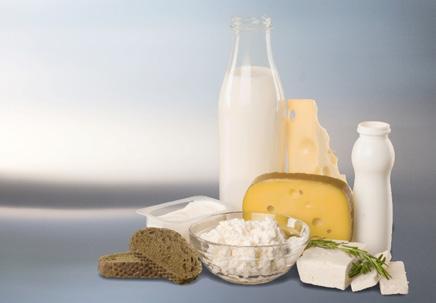
“Highly bioavailable” is an important term; it means not only are milk and dairy products important contributors of calcium in the diet but that this calcium is very well absorbed by the body. Dairy products, such as milk, yogurt and cheese, are considered among the most reliable sources of calcium because the natural content found in them is well absorbed by the body.3
Milk products are recognized by the FAO for their protein content as well. The protein in milk is a complete protein, meaning it provides all the amino acids required for supporting the optimal development and maintenance of muscles and other body tissues. It makes dairy particularly efficient at supplying protein that supports the development and growth of body tissues like muscles.
The FAO report states, “TASFs are an especially important source of vitamin B12, which is not found in bioavailable forms in plant-based food.” A deficiency in vitamin B12 can lead to serious conditions, and seniors and people following a vegan diet are at increased risk. A recent study also revealed in Canada, the prevalence of inadequate intakes of vitamin B12 among women 19 years and older is 21 per cent.4
TASFs like dairy are commonly recognized for making up nutrient inadequacy. The International Osteoporosis Foundation recommends foods as the preferred source of calcium; it highlights “Milk and dairy products are the most readily available dietary sources of calcium. Dairy foods have the additional advantage of being good sources of protein and other micronutrients important for bone health.”5
The FAO report confirms terrestrial animal source foods, such as meat, milk and eggs, are nutrient-rich and play a role in enhancing the food security and nutrition of people of all ages. It highlights the important role dairy products play in optimal nutrition across the lifecycle, more specifically, pregnant women, school-age children and adolescents, adults, and older adults.
While the FAO report presents evidence from a global perspective, many of the recommendations apply to Canada. The report encourages governments to update national food-based dietary guidelines so they adequately consider terrestrial animal source foods (TASFs) and the specific nutrient requirements they contribute across the lifecycle.
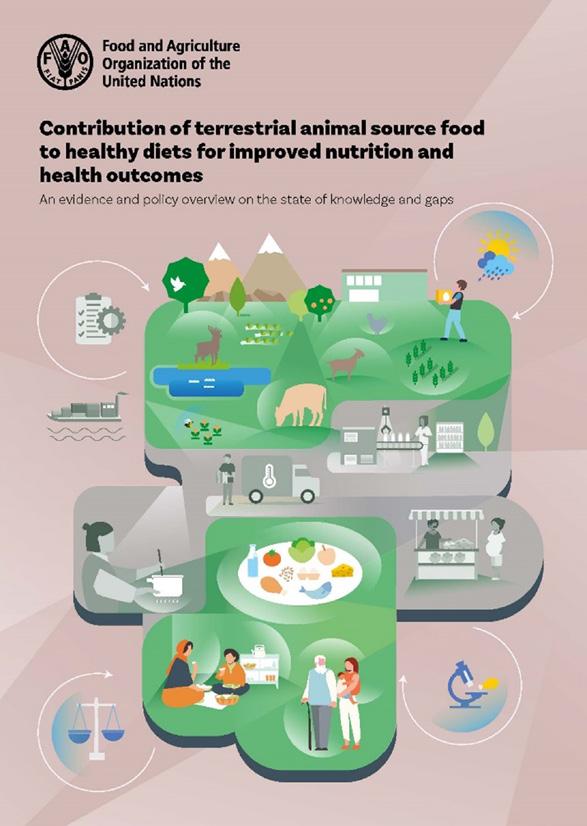
The FAO report also mentions these sources have “been shown to counteract the effects of antinutrients found in plantbased foods.” Anti-nutrients are natural substances, such as phytates and oxalates found in plant-based foods that interfere with the absorption of nutrients like calcium. The report also states “emerging evidence on the sustainability of diets shows that greater diversity in the diet (plant-based foods, TASFs and aquatic foods) contributes to higher nutrient adequacy.” This suggests a sustainable diet that includes a balance of a variety of animal-based and plant-based foods – as opposed to only plantbased foods – is more likely to provide all the nutrients required for optimal growth, development and overall health.
The report is a high-profile portrayal of the tremendous nutritional and health benefits associated with the consumption of milk products as part of a healthy, sustainable diet.
References
1. Food and Agriculture Organization of the United Nations. 2023. Contribution of terrestrial animal source food to healthy diets for improved nutrition and health outcomes. Rome. www.fao.org/documents/card/ en?details=cc3912en#:~:text=Diverse%20foods%20 derived%20from%20livestock,for%20improved%20 nutrition%20and%20health. Accessed on July 31, 2023.
2. Health Canada. 2016. Evidence review for dietary guidance: Summary of results and implications for Canada’s Food Guide. Ministry of Health.
3. Weaver CM and Plawecki KL. 1994. Dietary calcium: adequacy of a vegetarian diet. Am J Clin Nutr;59:1238S-1241S
4. Ahmed. M. Nutrient intakes of Canadian adults: results from the Canadian Community Health Survey (CCHS)–2015 Public Use Microdata File. Am J Clin Nutr. 114:1131-40. www. ncbi.nlm.nih.gov/pmc/articles/PMC8408873. Accessed on July 31, 2023.
5. International Osteoporosis Foundation. Calcium. www.osteoporosis.foundation.
Nutrition research has traditionally focused on identifying the specific associations through which single nutrients impact health outcomes, such as with saturated fat and heart disease, or calcium and bone health.
Now, the focus is shifting toward the impact of whole foods. The food matrix concept embraces the importance of considering whole foods alongside the individual components they contain. Scientists and nutritionists are recognising the effects of milk and dairy products go beyond the benefits of the individual nutrients they contain. The unique dairy matrix is responsible for its many health benefits.
― BITA FARHANG, PH.D. SENIOR ADVISOR, SCIENCE AND SUSTAINABLE NUTRITION, DAIRY FARMERS OF ONTARIOTHE POPULARITY OF AUTOMATED MILKING SYSTEMS (AMS) on Canadian dairy farms continues to increase.

Automated milking systems may reduce human labour since cows generally milk voluntarily. Along with the benefit of reducing human labour needs, there have been reports implementing an AMS improves cow health, production and overall farm profitability.
Dr. Trevor DeVries at the University of Guelph has been working with his research team to investigate how bedding, housing, ventilation and herd management practices on farms with AMS affect milk production and cattle health. The punchline? While every AMS farm differs, the research shows implementing housing and management practices, such as adequate feed bunk space, wider lying areas, clean alley ways, appropriate ventilation, frequent feed push-ups, proper animal conditioning, reduced curb heights and sand bedding, can reduce lameness and improve a farm’s productivity.
Certain cattle health conditions, such as lameness, affect farms with AMS more than other farms. For AMS farms, lameness can negatively impact milk production, resulting in decreased milk visits and an increased need for fetching cows to be milked, which results in reduced milk yield and lower overall production. Because of the increased popularity of AMS and differences in herd management
While every AMS farm differs, the research shows implementing housing and management practices can reduce lameness and improve a farm’s productivity.
In herds with AMS…
Milk yield is positively associated with:
• Increased feed push-up frequency
• Increased feed bunk space
• Use of sand bedding
• Mechanical barn ventilation

• Reduced lameness prevalence
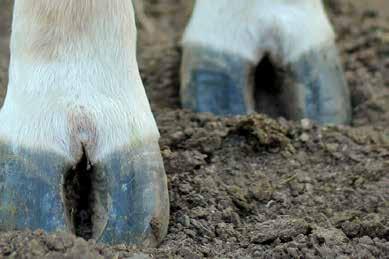
Lower levels of clinical lameness are associated with:
• Use of sand bedding
• Increased feed bunk space
• Animals with proper body conditioning
• Lower stall curb heights
Reduced SCC is associated with:
• Lower levels of clinical lameness
• Proper animal body conditioning
• Use of sand bedding
• Frequent alley cleaning
• Wider lying alley widths
that come along with this technology, it is important to consider how management practices affect these herds and the best practices to implement for increasing farm productivity.
In a large recent study, Dr. DeVries and his team investigated housing and management strategies of 197 AMS farms across Canada to determine associations between factors, such as ventilation, stall bedding, animal condition, adequate space, milk yield and milk quality. Associations between these parameters and on-farm lameness were investigated in a subset of 75 Ontario herds. Herdlevel housing and management strategies, such as barn design, alley widths, stocking density, bedding, feed, feed bunk and manure management, were benchmarked on these Canadian farms using AMS. These benchmark values were used to determine associations between management practices and milk quality and milk production.
Dr. DeVries’ work demonstrated clinical lameness (a locomotion score greater than or equal to three) was less prevalent on farms with sand bedding, increased bunk space, lower curb heights, and among those with fewer underconditioned cows. These findings are supported by previous research showing risk factors for lameness include low body condition, reduced stall space, increased curb
height, overstocking and less frequent manure scraping in alleyways. Lameness is important, not only because of the impacts it has on animal health and welfare, but also because lameness can affect milk production. Farms with a lower prevalence of clinical lameness had a greater frequency of milking visits per day and higher average milk yield (each 10-percentage point decrease in clinical lameness prevalence was associated with a two kilogram per cow, per day greater milk yield).
Dr. DeVries’ team also discovered greater milk yield was also positively associated with management and housing factors on AMS, such as increased feed push-up frequency (average of 12.8 ± 8.3 times per day ), using mechanical ventilation as opposed to only natural ventilation, and increased bunk space (average of 64 ± 21.5 centimetres per cow).
Somatic cell count (SCC) is a good indicator of milk quality and animal health. This project demonstrated practices associated with reduced SCC on AMS herds included frequent alley cleaning (average of 12.1 ± 7.5 times per day ), wider lying alley width (average of 304.5 ± 40.0 c entimetres) and using sand bedding over organic bedding. Herds with lower clinical lameness prevalence also had lower average SCC.
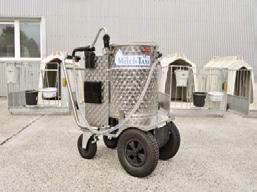

Based on these studies, it’s clear housing and management factors on AMS farms can influence cow health and productivity. In particular, ensuring animals have adequate feed bunk space, wider lying areas, clean alleyways and appropriate ventilation is critical. Combining these practices with frequent feed push-ups, proper animal conditioning, reduced curb heights and sand bedding can improve animal health and welfare by reducing lameness, while simultaneously improving the productivity of the farm. These best practices can be implemented and can improve the farm’s productivity, as well as improve the health and welfare of the animals.
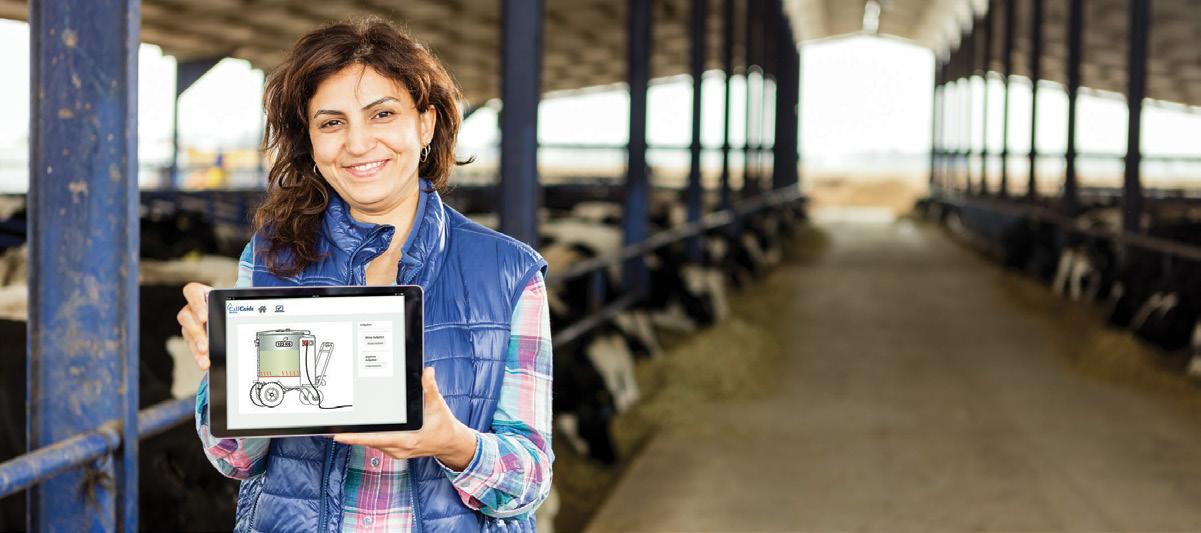
Julia Saraceni is Consultant, Dr. Steven Roche is Principal Consultant and Carlee Wright is Creative Director with ACER Consulting. Dr. Trevor DeVries is Canadian Research Chair in Dairy Cattle Behaviour and Welfare, University of Guelph.
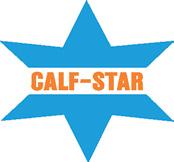
Clinical lameness was less prevalent on farms with sand bedding, increased bunk space, lower curb heights, and among those with fewer underconditioned cows.
GEA Liquid Manure Spreaders are continuously renowned for their performance, reliability, and durability. The effective design and high-level fabrication of this equipment as well as the service/support provided by our knowledgeable dealer network make GEA spreaders
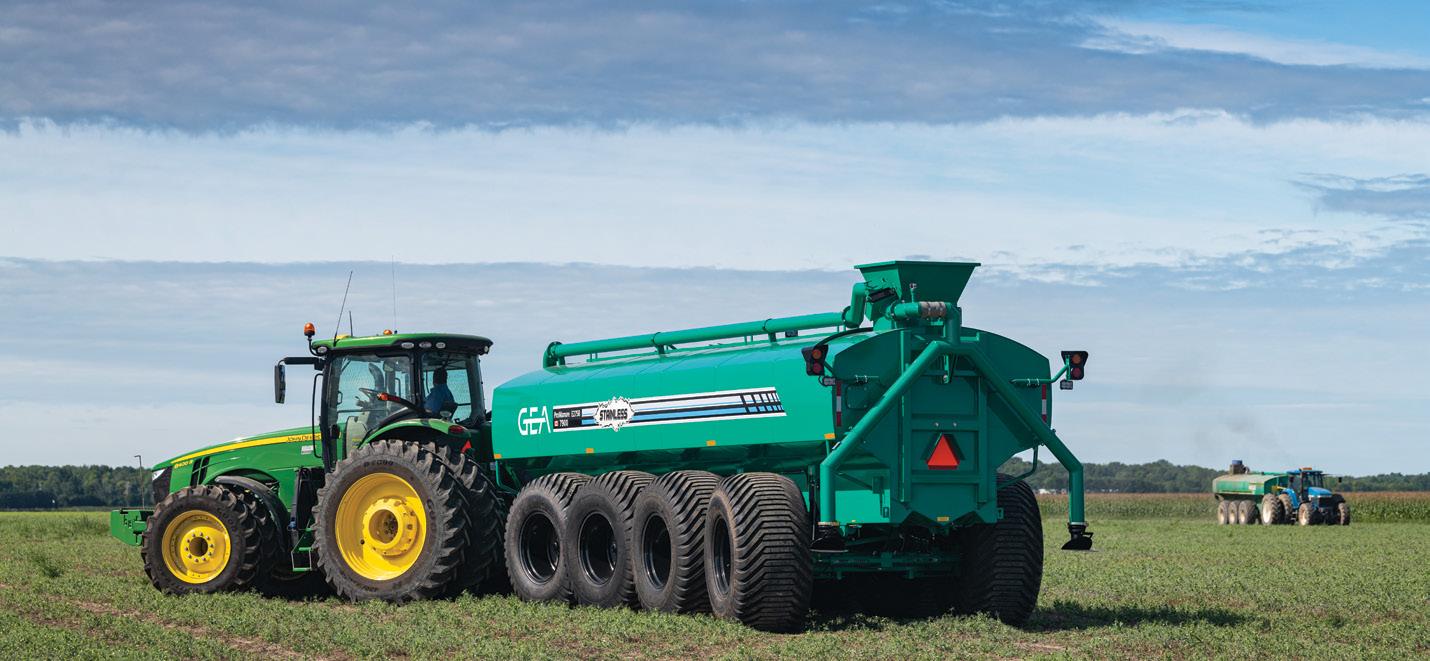
the preferred choice over any brands on the market. Put the GEA Liquid Manure Spreader to the test and you will see that the reputation is not overrated.
BRITISH COLUMBIA
Mountain View Electric Ltd.
Enderby — 250 838-6455
Pacific Dairy Centre Ltd.
Chilliwack — 604 852-9020
ALBERTA
Dairy Lane Systems
Leduc — 780 986-5600
Nobleford – 587-335-9742
Lethbridge Dairy Mart Ltd.
Lethbridge — 888 329-6202
SASKATCHEWAN
Dairy Lane Systems
Warman — 306 242-5850
Emerald Park — 306 721-6844
MANITOBA / NW ONTARIO
Penner Farm Services Ltd.
Blumenort — 204 326-3781
Thunder Bay ON – 800 461-9333
Tytech
Grande Pointe — 204 770-4898
ONTARIO
Claire Snoddon Farm Machinery
Sunderland — 705 357-3579
Conestogo Agri Systems Inc.
Drayton — 519 638-3022
1 800 461-3022
County Automation
Ameliasburg — 613 962-7474
Dairy Lane Systems
Komoka — 519 666-1404
Contact your local GEA dealer to learn more about GEA ProManure equipment
Keith Siemon Farm Systems Ltd.
Walton — 519 345-2734
Lamers Silos Ltd.
Ingersoll — 519 485-4578
Lawrence’s Dairy Supply Inc.
Moose Creek — 613 538-2559
McCann Farm Automation Ltd.
Seeley’s Bay — 613 382-7411
Brockville — 613 926-2220
McLaren Systems
Cobden — 613 646-2062
Melbourne Farm Automation
Melbourne — 519 289-5256
Aylmer — 519 773-2740
Watford — 519-876-2420
Silver-Tech Systems Inc.
Dunnville — 905 981-2350
ATLANTIC PROVINCES
Atlantic Dairy Tech.
Charlottetown, PE — 902 368-1719
Mactaquac Farm Equip. Ltd.
Mactaquac, NB — 506 363-2340
Sheehy Enterprises Ltd.
Shubenacadie, NS — 902 758-2002
Sussex Farm Supplies
Sussex, NB — 506 433-1699
Often imitated, but never equalled.
AS ALL DAIRY FARMERS KNOW, the reality of making money from milking cows is much more difficult than simply milking cows.
With feed accounting for up to 70 per cent of variable costs on a dairy farm, it is one external factor that can help the bottom line when managed well.
Obviously, the more milk a cow can produce and the greater her feed efficiency, the more profitable each cow is. Because those profits rise even more when the contribution
made by homegrown feeds rises as well, numerous research projects around the world are examining how producers can incorporate more homegrown feed into their rations.
Since the war in Ukraine began, the economics of dairy farming across the world changed dramatically.
The price of a kilo of concentrate on most dairy farms escalated to more than the price
received for a litre of milk, which prompted many farms to carry out their own dairy herd performance evaluations.
Dairy advice centres, such as CAFRE (College of Agriculture, Food and Rural Enterprise) in Northern Ireland, have since made a number of recommendations to help manage feed efficiency in these uncertain times.
Taking drastic action by reducing the quantity of expensive concentrates fed to dairy cows is perhaps not one of the best solutions.
“Farmers should focus more on feed efficiency and improve their milk from forage, where possible, to maximize profitability,” says Alan Hopps, CAFRE senior dairying adviser.
“Cows perform best when their diet is consistent thus large, knee-jerk reactions can adversely hit herd performance. The reduction in performance may not occur immediately but fertility and milk yield may suffer some months in the future if concentrate input level or quality is dropped substantially.”
• Farmers running a pasture-based system should make as much use of grass as possible and graze more cows than usual if the herd is part housed.
• In a grazing herd, match the stocking rate to grass growth to ensure good intakes of grass dry matter. Where surpluses of grass arise on the grazing platform,
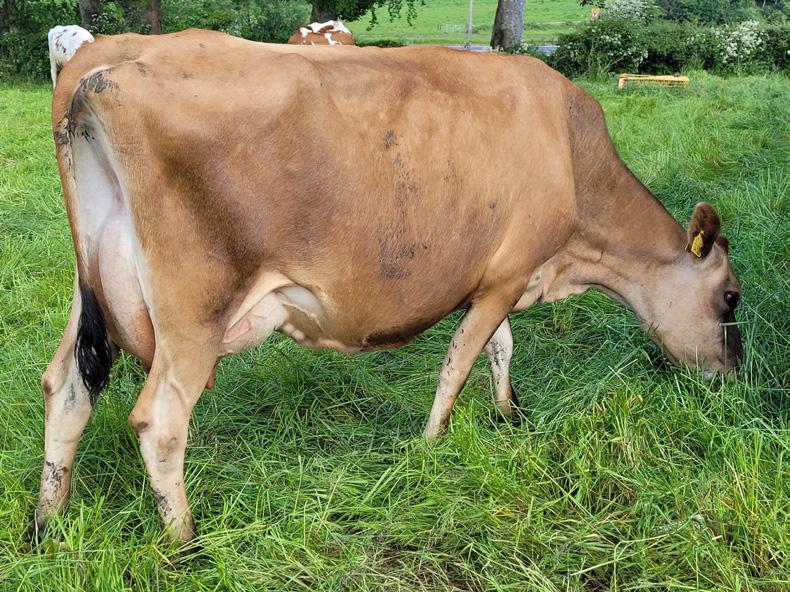
With feed accounting for up to 70 per cent of variable costs on a dairy farm, it is one external factor that can help the bottom line when managed well.


Optimize
• total daily feed intake
• high feed quality
• good rumen function
Minimize
• feed gaps throughout the year
• feed wastage
• energy losses
Dramatically rising feed costs means ensuring cows are as feed-efficient as possible.
• If cows are grouped, move cows between groups regularly to ensure low-yielding cows are not over-fed.
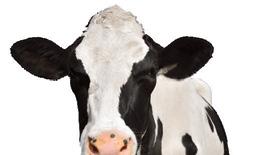
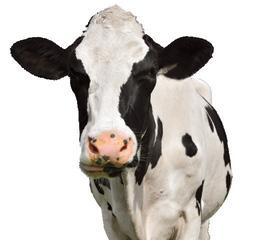
take paddocks out for bales as soon as possible.
• Focus on forage quality, both grazing and silage, so cows can maximize their intake of quality forage.
• Ensure the best forage available on the farm goes to the most productive batch of cows, feeding according to yield as soon as possible in the lactation.
• Ensure parlour feeders and weigh cells on the diet feeder are regularly calibrated.
Dairy Australia, the Australian national body for the dairy industry, and a research and development corporation, has also undertaken research projects on feeding for a profit.
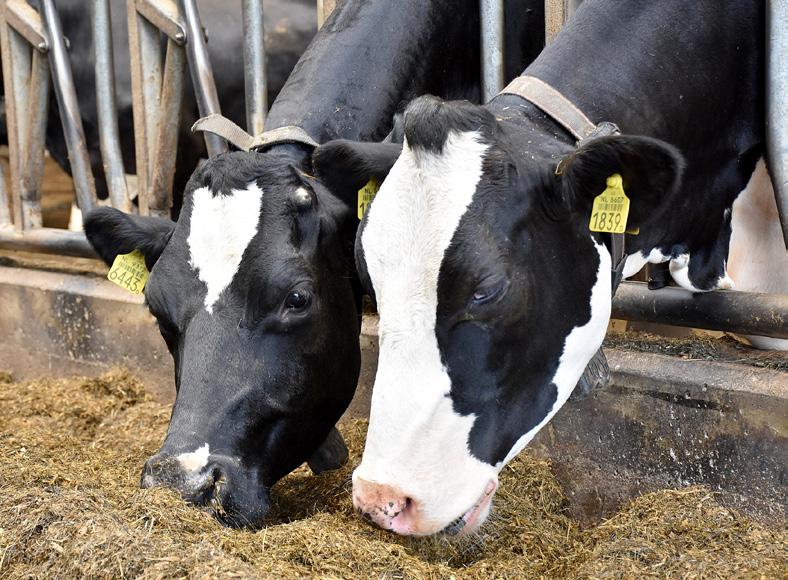
“Farmers should focus more on feed efficiency and improve their milk from forage, where possible, to maximize profitability.”
Omega-3 rich ingredient Sustainable / carbon neutral Immunity support
—Alan Hopps, CAFRE
It says farmers should measure the efficiency with which feed is converted into milk on the farm. Feed Conversion Efficiency (FCE) is a key measure of feeding system efficiency on a dairy farm, impacting feed cost per unit of milk and milk operating profit.
FCE is also an important factor impacting a farm’s greenhouse gas emissions and is expressed in terms of the amount of milk produced per kilogram of feed given.
One U.K. farm that has tinkered with its feeding inputs and used more homegrown forage is seeing an increase in profitability.
Honeypot Farm in Leicestershire runs 380 Holstein Friesian cows and is achieving 5,000 litres of each cow’s annual production from forage by grazing quality grass, making better silage and returning to a simpler feeding system.
The herd was switched from a TMR system with buffer feeding, to grazing for seven months of the year and fed silage through a
forage box, plus a return to feeding cake in the parlour.
As a result of improving production from homegrown forage, George Wade, who farms with his dad and brother, have cut concentrate costs and vastly improved the bottom line.
“Before, our concentrate feed rate was 0.3 kilograms per litre, including brewers grains, citrus pulp and bread, plus silage,” says Wade. “Now, we only feed 55 kilograms of forage plus seven kilograms of cake, a feed rate of 0.21 kg per litre.
“We are trying to run the cheapest system as a forage-based one. Yield has dropped to 8,000 litres at 4.3 per cent fat and 3.6 per cent protein, but our concentrate costs [are lower] and we’re no longer buying in any bulk feed [other than] a 28 per cent protein dairy nut, which drops to 14 per cent in the spring.”
Every dollar counts when it comes to the cost of running a dairy farm and feed is the most unpredictable of these costs. Having a plan, a nutrition team and a good handle
on the numbers will shine a light on where and whether improvements can be made to ensure the economics make sense.
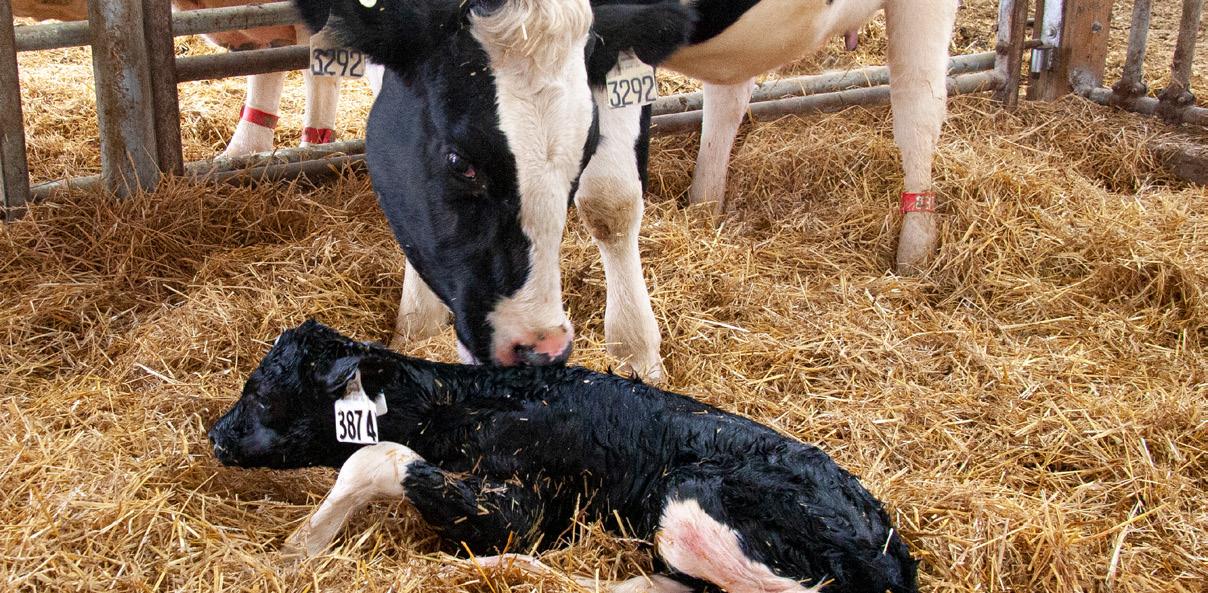
Cows can produce 57 kilograms of saliva in one day.
An average cow has more than 40,000 jaw movements in a day.
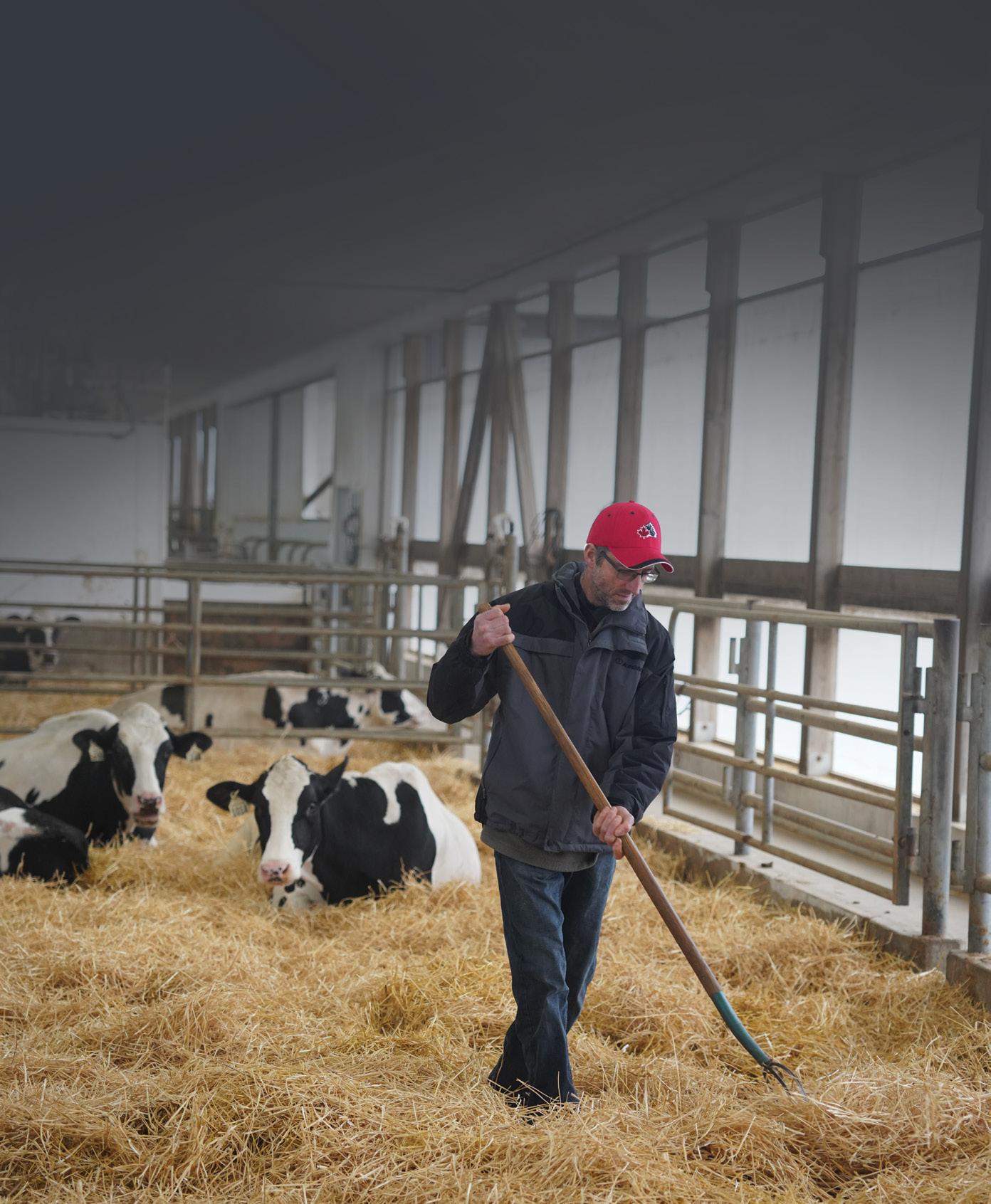







“The Udder Comfort™ pre-fresh groups came in with udders full of milk, but so soft. Robot attachments are faster and fetching time has been cut by 70% on rst lactations. That’s huge, making the robots more ef cient,” says Josh Lingen, Balaton, Minnesota.


They milk 360 cows in 5 robots, making 40kgs of 5.2 fat milk. They used Udder Comfort routinely after calving for 5 years and started pre-fresh applications 2 years ago. “We always saw results in quality and performance. Now we see additional bene ts in how our heifers come into the robot barns,” Josh explains.
“We apply Udder Comfort Spray to our pre-fresh 2-year-old groups in headlocks 1x/day for a week before calving. The biggest thing we see is how this reduced fetching and improved robot attachment times. I absolutely love this product!”



OCTOBER 3 - 6
• Virtual Farm Tours
• Expo Seminars

• Expo en Español
• Dairy Forage Seminars
• Knowledge Nook Sessions
DAIRY CATTLE SHOW
OCTOBER 1 - 6
• 2,400 Cattle Onsite
• 1,600 Exhibitors/Breeders

• Seven Major Dairy Breeds
• Superior Genetics Showcased
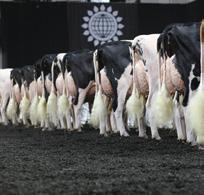
• Onsite Cattle Sales
OCTOBER 3 - 6
• 700 Participating Companies
• New Product Launches
• Online Listings & Maps

• Commerces & Networking
• Translators
• Private lounge space
• International Reception
• U.S. Department of Commerce
Trade Event Partnership Program (TEPP) Participant

Purchase your tickets online before you arrive in Madison using our digital ticket platform! Tickets can be downloaded and scanned at the gate directly from your phone, printed at home or shared with others in your group via text or email.
Expo highly encourages you to purchase your tickets before October to take advantage of the discount pricing for advanced ticket purchases! Scan the QR code or visit our website to purchase your digital tickets.
Admission will be required October 3 - 6
SCAN TO PURCHASE YOUR DIGITAL TICKETS AND FIND MORE WDE DETAILS!

The library of knowledge behind feeding dairy cows and its impact on health and milk production has grown exponentially in recent years. Much of that knowledge growth, experts say, relates to calves.
The January 1947 issue of Milk Producer was full of ads for feed, most of which applied to the youngest members of the herd.
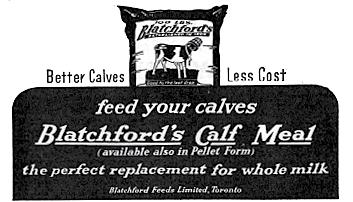
We know a high-producing dairy cow requires a diet that supplies the correct nutrition to grow, develop and reproduce, and in order to develop the cow that will be a better lifetime milk producer, it begins with the nutrition of the calf and heifer.
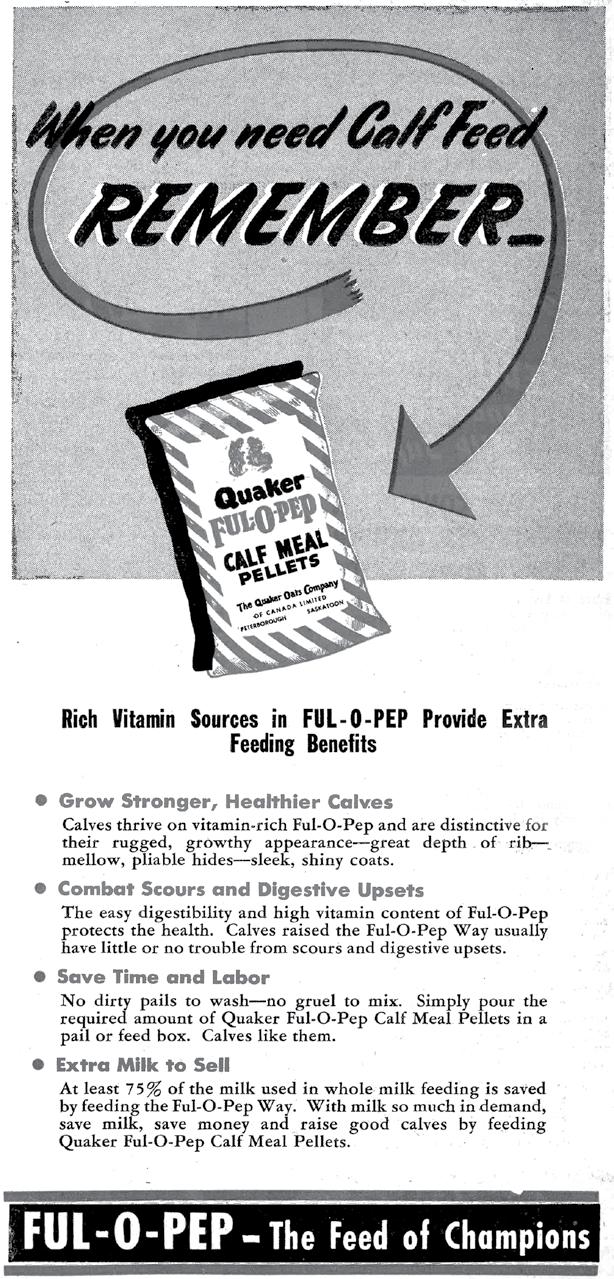

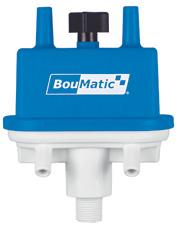


Elevate makes your results easy to understand. Put the information to work right away and know it’s always at your fingertips with the Elevate app.


Your information includes:
• North American Proofs –Canadian LPI proofs plus US TPI proof (with CDCB fee)
• Haplotypes and milk proteins (beta casein, kappa casein)
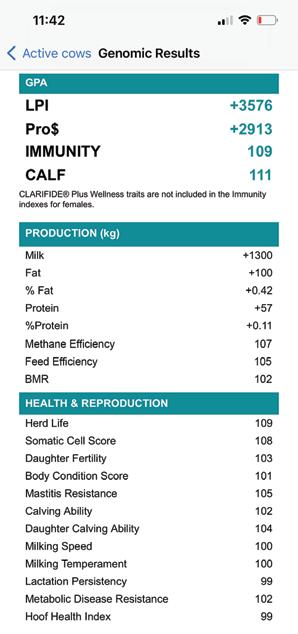
Index and Calf
Methane Index available on all

BREED YOUR FUTURE HERD
